ENVIRONMENTAL PROTECTION COMMITTEE MINUTES – MAY 10, 2017
*MICHAEL E. PLOCHOCKI, CHAIRMAN
MEMBERS PRESENT: Dr. Chase, Mrs. Tassone, Mr. Burtis, Ms. Cody
ALSO ATTENDING: See attached list
Vice Chair Burtis called the meeting to order at 9:10 a.m. A motion was made by Mrs. Tassone, seconded by Dr. Chase, to waive the reading of the proceedings from the previous committee. MOTION CARRIED. A motion was made by Mrs. Tassone, seconded by Dr. Chase, to approve the minutes from the previous committee. MOTION CARRIED.
1. ONONDAGA COUNTY WATER AUTHORITY:
a. Confirming Reappointments to the Onondaga County Water Authority (John V. Bianchini, Kenneth Gardiner) (Sponsored by Mr. McMahon)
A motion was made by Mrs. Tassone, seconded by Mr. Burtis, to approve this item. Passed unanimously; MOTION CARRIED.
2. WATER ENVIRONMENT PROTECTION: Tom Rhoads, Commissioner
a. A Local Law Authorizing the Extension of a Lease of County Property Known as James J. O'Connor Field Located within the City of Syracuse to the Syracuse Chargers Rugby Club, Inc. for use in Connection with Rugby Activities
Mr. Rhoads:
- Leased property, part of Harbor Brook Flood District
*Chair Plochocki arrived at the meeting.
-
Located Southside of the City, subject to infrequent flooding, no County use, Chargers developed ruby field, improved and maintain property – not a park; 3 year extension, 3 year lease prior
- No alcohol consumed or served during games
- Rookie program gives back to the community; stable club, provide insurances
In answer to Dr. Chase, Mr. Rhoads confirmed that the property was located off of the Velasko and Onondaga Roads area. Dr. Chase said that there are always many people there. Mr. Rhoads said it generates a little bit of wholesome activity, which is good for the community and our property.
In answer to Mrs. Tassone, Mr. Rhodes said that they had been using the property for 3 years. Mr. Burtis said the current lease ends on 8-31-17, and they are looking for another 3 year lease with an option for an additional 2. Mr. Rhoads agreed, adding that the club makes investments in the property and prefers a lease.
A motion was made by Dr. Chase, seconded by Mr. Burtis, to approve this item. Passed unanimously; MOTION CARRIED.
b. A Resolution Calling a Public Hearing for the Purpose of Considering an Increase in the Estimated Maximum Cost of Proposed Improvements for the Baldwinsville Treatment Plant
For the record Chair Plochocki said, “If we are going to have an increase this is the way to do it, with an offset”. From time to time projects go over. In theory sometimes they go under, but in practice it seems as if they always go over on estimates. All committees, this committee in particular, have said that it is tough on our budgeting when estimates are inaccurate. While everyone is trying to do their best, it is particularly difficult for us when a project goes over and they seem to always go over. If it was accurate forecasting you would tend to think that sometimes our guess would be high and others low. However, it seems all too often our estimates are low and we keep getting surprised. We have encouraged engineering firms to work with WEP and raise the numbers, if needed, to error on the side of caution.
Chair Plochocki said that even though they have the bad news of a $1.1 million overage, next month they will bring forward another project from Oak Orchard that has come in $1.1 million under budget. If things are going to happen, this is the way to do it. The committee understands that forecasting is not a science, it is an art to an extent. None the less, we want to be in a situation where we can more tolerate shortfalls via overages. Chair Plochocki said that he does not want to encourage cost overruns, but in all sincerity wants to thank WEP and the engineers they work with. This is the trend we want to see.
Mr. Rhoads:
-
Requesting public hearing approval today, back next month for authorization to enlarge Baldwinsville disinfection dechlorination by $1.1M and companion resolution to reduce Oak Orchard project by $1.1M – no net enlargement of debt service for entire consolidated sanitary district’
-
February 2017 authorized $1.8 million based on 50% cost estimate, 100% estimate still slightly under $1.8M; competitive bidding with 2 general contractors and 4 electrical contractors, bids came in at $2.9M including finance and other costs associated with the project
-
Upgrades required for permit compliance – subject to potential penalties of $37,500 per day; recommend proceeding, rebid venerable to not meeting deadlines or accelerating construction
-
Introduced John Perriello, project lead for ARCADIS
-
Abundance of WEP work on the streets, $40M project in Utica to be bid this month, additional work in Oswego, much competition – may have caused higher bids
In answer to Ms. Tassone, Mr. Rhoads said that the total of all bids was $2.645 million, and we need a little more to cover financing. $2.9 million is the total for the project and $2.645 is the sum of all bids as there are multi-primes including electrical.
To clarify Chair Plochocki said that this is SPDES required and we do not have the option of saying we are not going to do this as the bids are too high. Mr. Rhoads confirmed that there is no option. For the record Chair Plochocki said, “And you are also saying, in your professional opinions, although things came back high you do not believe that to be an outlier. You would expect that if things were rebid, roughly, they would come back again at that amount”. Mr. Rhoads said that both general contractors were heavyweights and had fairly competitive bids in comparison to each other and the electrical bidding was within 10% of each other. We don’t believe there is a way to rebid this project without taking on more risk - compressed the timeframe. Professionally it does not make sense to go through a rebid, don’t believe there will be savings opportunities.
Dr. Chase asked why the estimate was so much less. Mr. Perriello said that, after speaking with the contractors, it appears the prime item was bypass pumping; change between 50% and 100% put more on the contractor and the pricing on the estimate did not reflect the increased responsibility.
Mrs. Tassone asked why not wait to ask for funds until the amount is known. Mr. Rhoads said that typically bidders hold their bids for 90 days, subjecting themselves and all their capital to receiving the project. They can’t proceed any further and don’t know if the project will be awarded. Contractors take on additional risk when asked to hold bids beyond that period. In this case, we had to ask the low bidders to hold their bids for an extended period. Our process takes well over 120 days, almost 150 days, just to fund the money. Once we have the resolution to fund the money, we have to prepare the contractual engagement. If the project was rebid it would be 210-240 days between the bid and project start date. We would be asking contractors to hold almost a year’s worth of capital and that becomes very expensive. That is typically not done in the industry as costs significantly increase for the premium of contractors waiting.
Mrs. Tassone said that they are also taking a risk in not knowing if the increased amount will be approved, and asked if they just assume it will be. Mr. Rhoads reiterated that we had to ask them if they would hold their bids. Technically they can walk away, and we would be exposed to the risk. If the low bidder walks there is a serious risk of not meeting the deadline and/or paying more. Mrs. Tassone said that she realizes that, and knows that this no one’s fault. Perhaps they should start bidding a year ahead of time to meet the deadline. Mr. Rhoads said that we can’t award a contract without legislative authorization for the dollars. Ms. Berger said that there is a law that states you can’t enter into a contract without appropriations. There can be no contract until a bond is authorized. Mr. Rhoads said that the project could be bid but contractors would still have to stay in limbo and hold their bids with perhaps unknown authorization. Mrs. Tassone said that she did not realize this.
Mr. Burtis said that the high number was $5.2 million total. Mr. Rhoads said that it includes the original engineering for this project and another piece of engineering for the campus rehabilitation project that follows; currently scoring RFP for engineers to preform comprehensive assessment of the overall campus. The particular $1.8 million part of this project is raising to $2.9 million for the construction piece only.
Mr. Burtis asked if things besides the bypass pumping increased the bid. Mr. Perriello said there were some minor things. There were a number of coding’s on the project and they used a higher unit cost, which made an impact due to the quantity. A thorough evaluation was done, after the fact, and those were the only things that really jump off the page.
Mr. Burtis asked if a miss like this would be noted for the contractor and future bids. Mr. Perriello said that every job is different, doesn’t know that this would necessarily be noted from job to job. A thorough review was done after the fact, and we have it in writing that they will honor their bids.
Mr. Burtis said that he can appreciate the complexity of the process and length of time. Mr. Rhoads said that there is a small universe of WWTP builders in the area - 2 or 3. Currently there is a lot of work in the region and this is a smallish project that still requires a lot of resources and much administrative burden. Some costs for administering a small project can be significant or a larger component of the project overall. Mr. Perriello said that it is too big for the little guys and the big guys may not put their full attention into going after it, if other things are going on. We tried to solicit other contractors for more competition but it was a tough bidding climate with much going on in the region. Mr. Rhoads said that they make bids, and plan and spec rooms, available regionally to cast a large net. Mr. Burtis said that he appreciated the offset.
Dr. Chase asked what the legislature can do to speed up the process – seems like it was last month, this month and next month. Mr. Rhoads said that some of this has to do with the complexities of the codes. Barring special meetings, there is no other way to do it. Commissioner and legislative hearing have to be held and it takes at least 120 days to bring it to fruition.
- Capital investment required by permit, doesn’t renew or add additional capacity to 35 year old plant
- Mandate required to be delivered at set time and paid for with local dollars
- Sanitary rates held stable past 3 years; no additional debt service due to Oak Orchard offset
Chair Plochocki asked why the engineers estimate was low for bypass pumping. Mr. Perriello said that some requirements changed between 50% and 100% and some of the resulting flows did not get represented. The duration of pumping was another factor – thought equipment would be used, demobilized and brought back. Mr. Rhoads said that contractors are leaving the equipment on site to offset the risk of not having the equipment when needed.
Chair Plochocki questioned the reason for the coding difference. Mr. Perriello said that we used cost estimates from recent bids. Contractors seemed to be using a higher number, likely due to working in a wet environment and the deadline. Mr. Rhoads added that the contract will be awarded in the summer, but they will be doing work through the winter season, i.e. winter concrete, winter coding. Each project has its own unique attributes and contractors has to price those.
A motion was made by Dr. Chase, seconded by Mr. Burtis, to approve this item. Passed unanimously; MOTION CARRIED.
Mr. Rhoads thanked Mr. Perriello for attending, adding that he will be available next month for Ways and Means.
3. OFFICE OF ENVIRONMENT: Travis Glazier, Director,
a. For the Onondaga County Solid Waste Management Plan: Amending Resolution No. 236-2014 to Approve the Classification of A Type I Action Under the State Environmental Quality Review Act; Reaffirming Lead Agency Status; Accepting the Environmental Assessment Form; and Accepting and Adopting the Negative Declaration
Chair Plochocki said that the wording of the plan is not changing. This is a minor procedural change regarding Type 1 lead agency.
Mr. Glazier:
- Plan sent to DEC for review and acceptance
- Previous administration selected unlisted lead agency designation, reviewing agency asked for correction -Type 1, misinterpretation
Chair Plochocki asked that Mr. Glazier address what a Type 1 action is. Mr. Glazier said that he would defer to counsel; many specific items listed under Type 1. Ms. Berger said that, in a nut shell, a Type 1 action means that it could cause environmental damage. Mr. Glazier said that an unlisted action could too. It just means that the item is not listed within the listed items of Type 1; kind of the same thing and easy to misinterpret. Type 2 actions do not have an impact and are easier to explain. Type 1 and unlisted are tricky, there are specific actions which are listed under Type 1 and you have to go through a checklist to put yourself in that bucket.
Mr. Glazier said that in this particular case we felt we were updating our plan, whereas the DEC recognized it as a new plan altogether. Chair Plochocki said that a new classification is required because of that. Mr. Glazier said that county solid waste management plans are listed as a Type 1 action. Chair Plochocki said that this is required by the DEC.
A motion was made by Mr. Burtis, seconded by Mrs. Tassone, to approve this item. Passed unanimously; MOTION CARRIED.
The meeting adjourned at 9:51 A.M.
Respectfully submitted,

KATHERINE M. FRENCH, Deputy Clerk
Onondaga County Legislature
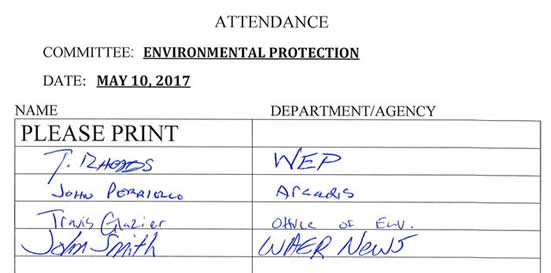
* * *
COUNTY FACILITIES COMMITTEE MINUTES – MAY 10, 2017
JUDITH A. TASSONE, CHAIR
MEMBERS PRESENT: Ms. Cody, *Mr. Plochocki, Dr. Chase
MEMBERS ABSENT: Mr. Dougherty
ALSO ATTENDING: see attached list
Chair Tassone called the meeting to order at 10:30 a.m. A motion was made by Dr. Chase, seconded by Ms. Cody to waive the reading and approve the minutes of the previous committee meeting; MOTION CARRIED.
1. ONONDAGA COMMUNITY COLLEGE:
a. Confirming Reappointment to the Onondaga Community College Board of Trustees (Allen J. Naples)
A motion was made by Dr. Chase, seconded by Ms. Cody, to approve this item. Passed unanimously; MOTION CARRIED.
2. CNY ARTS: Steven Butler, Executive Director
a. Amending the 2017 County Budget to Make Funds Available to CNY Arts ($125,000)
- Request for contingency funds for economic development grants for the arts; list of projects emailed
- Everything through panel process; panelists have no conflict of interest and are from outside of the County
- Panel asks if projects are capital project dependent (Brewseum – Beer Garden), then County money should be last in
- i.e. if Redhouse is not moving until next year, then funds should not be expended until they are in their new location
*Mr. Plochocki arrived at the meeting.
Chair Tassone stated the Legislature puts aside $125,000 in contingency, and Steve (Butler) normally comes in to ask for a portion of it throughout the year. This time it is all at once for economic development. The list provided shows each project, and how the money is split. Chair Tassone asked who does the economic impact on the projects. Mr. Butler responded this time they used someone from Artswego (arts expertise outside of County). Sometimes they use someone from the CVB with tourism expertise; Allen LaVenture, or the Economic Development Assistant Director at the City. Chair Tassone asked if this person comes up with the numbers of attendance. Mr. Butler replied that the groups are required to provide a formula based on a budget; they estimate the out of County attendees and in County attendees. The panel’s responsibility, based on their expertise, is to vet the applications and determine if there are any flaws in the formulas for attendees. Some applications rise to the top, and some fall to the wayside.
Chair Tassone asked if the Brewseum is new, and Mr. Butler agreed. Mr. Butler stated the panel is very interested, because it is economic development at its purist. The only issue is that the location is currently along the potential I81 solution, so it may be affected. This should be last money in, and Mr. Butler verified with leadership that it is the best strategy for taxpayer dollars. Dr. Chase asked where it is. Mr. Butler answered it is at the bottom of the block where the hotels are under I81. Mr. Plochocki said Almond. Mr. Butler stated if the site went away, the question is whether the hotel they are partnering with is going to identify a new site, or if this becomes a separate project all together. Mr. Butler responded to Dr. Chase that OHA has thought about this possibility, and the Industrial Development Board stated there is an allocation for them when they know the geography; panel followed suit. This project scored the highest.
A motion was made by Dr. Chase, seconded by Ms. Cody, to approve this item. Passed unanimously; MOTION CARRIED.
3. PARKS & RECREATION: Bill Lansley, Commissioner
a. Amending the 2017 County Budget to Make Funding Available for Vehicle Purchases for the Onondaga County Veterans Memorial Cemetery ($128,725)
Chair Tassone said it is $303,990, and said this is supposed to go through the Vehicle Use Review Board. Mr. Lansley agreed, and said Management and Budget wanted it to go through this committee first. It will then go to Management and Budget for review, which should not be a problem. It will be done before Ways and Means.
A motion was made by Dr. Chase, seconded by Mr. Plochocki, to approve this item. Passed unanimously; MOTION CARRIED.
4. TRANSPORTATION: Marty Voss, Commissioner; Chris Rauber, Civil Engineer
a. Amending the 2017 Onondaga County Budget to Accept $759,195 in Extreme Winter Recovery Funding from the New York State Department of Transportation, and Authorizing the Execution of Agreements ($759,195)
Mr. Voss:
-
Accepting Extreme Winter Recovery funding from NYS; treating like CHIPS; cannot count on year to year, but nature of winter had, came up with share for Onondaga County for $759,195; handout shows other additional work
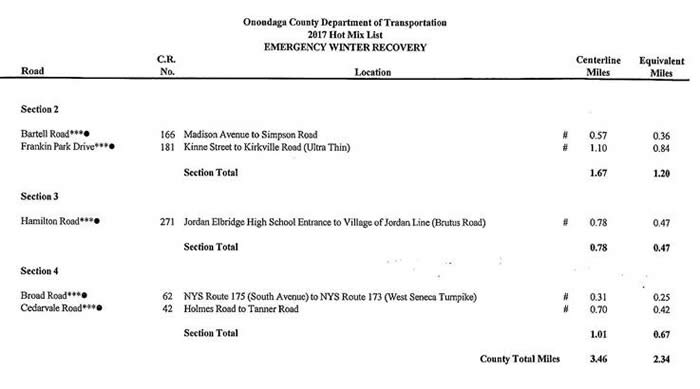
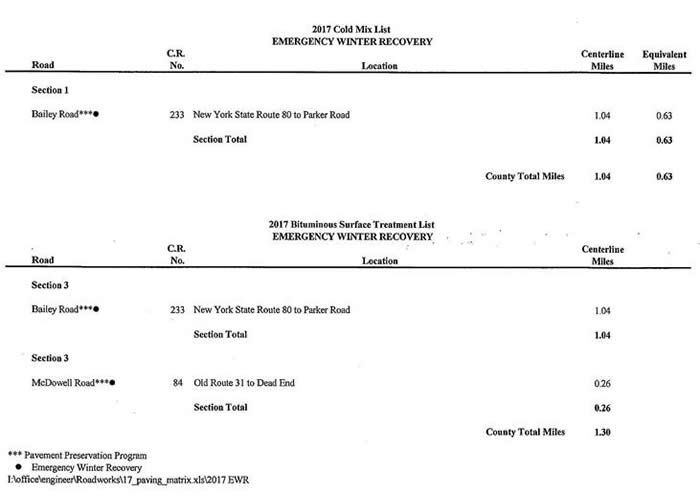
- Revenue from NYS; do additional work to address County roads impacted by weather; received in 2015, but not 2016
Chair Tassone asked if DOT will be able to get to all these roads, plus the regular work, and Mr. Voss responded yes; among other responsibilities.
Dr. Chase asked if it is 6 miles, and Mr. Voss replied yes. It will cost $760,000. The 2016 cost per mile was $265,000, and this year it is $240,000 per mile. Asphalt pricing is down because of oil pricing being down.
A motion was made by Ms. Cody, seconded by Mr. Plochocki, to approve this item. Passed unanimously; MOTION CARRIED.
b. Amending the 2017 County Budget and Authorizing the County to Pay in the First Instance 100 Percent of the Non-Federal Aid Eligible Costs at a Total Maximum Amount of $540,000 for the Design (Scoping I-VI) and Construction Phases of the South Street Culvert Over Smokey Hollow Creek Project, Pin 3756.44, and Authorizing Execution of Agreements ($540,000)
- First instance resolution; County will front money and receive federal and state reimbursement
- Apulia Road in Dewitt north of the reservoir; 3 sided box culvert needs to be replaced
- County won project on statewide solicitation process; from Bridge New York; 100% state funded
- Looking for both design and construction phases, because time constraints for getting it done, and money is capped
A motion was made by Dr. Chase, seconded by Mr. Plochocki, to approve this item. Passed unanimously; MOTION CARRIED.
c. Amending the 2017 County Budget to Fund in the First Instance 100 Percent of the Federal Aid Eligible Costs at a Maximum Amount of $520,000 for the Design (Scoping I-VI) and Right-Of-Way Incidentals Phase of the Canalways Trail Extension Project, Pin 3756.29, and Authorizing the County Executive to Enter into Agreements to Implement the Intent of this Resolution ($520,000)
- West Shore Trail project from corner of Honeywell to Hiawatha Blvd.; design and Right-of-Way phase
- Project from corner of Honeywell property where Harbor Brook comes into lake to Hiawatha Boulevard
- Includes trail and pedestrian bridge structure over CSX tracks; 80% federally funded; local share in previous work plan
Mr. Rauber responded to Mr. Plochocki that this is a first instance resolution to front the money the County will be getting reimbursed. Mr. Voss said the project is not ready for construction.
Dr. Chase commented that putting a bridge over the railroad tracks will be steep. Mr. Voss agreed, and said it will be a well-designed bridge. Mr. Rauber said it will meet ADA requirements with a maximum of a 5% continuous grade. It has to be 23’ above the tracks to provide clearance for a double car.
Chair Tassone asked if it will be bid out, and Mr. Voss replied yes. There have been project meetings to get the public involved and aware. It is a joint venture between DOT and the Office of Environment. When it is finished, it will be part of the Empire Trail from Buffalo to Albany.
A motion was made by Mr. Plochocki, seconded by Dr. Chase, to approve this item. Passed unanimously; MOTION CARRIED.
d. Amending the 2017 County Budget to Fund in the First Instance 100 Percent of the Federal Aid Eligible Costs at a Maximum Amount of $520,000 for the Design (Scoping I-VI) and Construction Phases of the Centerline Audible Roadway Delineators (C.A.R.D.) Installation Safety Project, Pin 3756.31, and Authorizing the County Executive to Enter into Agreements to Implement the Intent of this Resolution ($520,000)
-
CARD is rumble strips; 100% federal funded; safety project awarded to County DOT through statewide competitive process; accepting $520,000 to improve center line audible roadway delineators
-
DOT will be using this on eligible roadways from 2010 – 2013 work plan; recommended but not required; safety benefit to put these in on high speed roads to prevent head-on, cross overs and sideswipe accidents
Dr. Chase asked what the lifespan is with plows. Mr. Rauber responded they are unaffected, because they are recessed into the pavement (grinded in). The center line paint is in the grove which helps with visibility. Mr. Rauber replied to Dr. Chase that these are designed in a way, so the person does not lose control of their vehicle. It would wake someone up. Dr. Chase asked where they will be put. Mr. Rauber answered that DOT can get the committee a list. It is ~31 miles with volumes of over 6,000 vehicles a day at 45 mph and higher (undivided).
A motion was made by Dr. Chase, seconded by Mr. Plochocki, to approve this item. Passed unanimously; MOTION CARRIED.
e. Amending the 2017 County Budget to Fund in the First Instance 100 Percent of the Federal Aid Eligible Costs at a Maximum Amount of $392,000 for the Design (Scoping I-VI) and Right-Of-Way Incidentals Phase of the East Taft Road Paving Project, Pin 3756.23, and Authorizing the County Executive to Enter into Agreements to Implement the Intent of this Resolution ($392,000)
- 2 course pavement project; drainage and improvements; design and right-of-way; 80/20 local $98,000 in prior work plan
A motion was made by Mr. Plochocki, seconded by Ms. Cody, to approve this item. Passed unanimously; MOTION CARRIED.
f. Approving the Right-Of-Way Acquisition Phase of the Electronics Parkway 2R Paving Project, Pin 3755.71, Agreeing to Participate and Pay up to 100 Percent of the Non-Federal Share of the Project and Accepting Title to the Acquired Right Of Way
- $24,000; right-of-way on Electronics Pkwy between Old Liverpool and Hopkins; 2019 construction
A motion was made by Dr. Chase, seconded by Mr. Plochocki, to approve this item. Passed unanimously; MOTION CARRIED.
g. Approving the Right-Of-Way Acquisition Phase of the Fremont Road Bridge Over Butternut Creek Project, Pin 3755.70, Agreeing to Participate and Pay up to 100 Percent of the Non-Federal Share of the Project and Accepting Title to the Acquired Right Of Way
- Right-of-way phase; max of $50,000; 80/20 local; max share of $10,000 programmed in other work plans
A motion was made by Dr. Chase, seconded by Mr. Plochocki, to approve this item. Passed unanimously; MOTION CARRIED.
h. Approving the Right-Of-Way Acquisition Phase of the Old Route 5 & Warners Road Paving Project, Pin 3755.69, Agreeing to Participate and Pay up to 100 Percent of the Non-Federal Share of the Project and Accepting Title to the Acquired Right Of Way
A motion was made by Mr. Plochocki, seconded by Dr. Chase, to approve this item. Passed unanimously; MOTION CARRIED.
i. Amending the 2017 County Budget to Pay in the First Instance 100 Percent of the Federal and State Aid Eligible Costs at a Maximum Amount of $1,567,500 for the Oran Delphi Road Bridge Over Limestone Creek Project, Pin 3755.22, and Authorizing Execution of Agreements ($1,567,500)
- Local share $82,500 already programmed; replacing existing super structure, modifying and repairing abutments; 2018
- Close to eastern border of County; Oran Delphi runs along border further south
A motion was made by Dr. Chase, seconded by Ms. Cody, to approve this item. Passed unanimously; MOTION CARRIED.
j. Amending The 2017 County Budget To Pay in the First Instance 100 Percent of the Federal and State Aid Eligible Costs at a Maximum Amount of $1,140,000 for the Otisco Valley Road Bridge Over Nine Mile Creek Project, Pin 3755.23, and Authorizing Execution of Agreement ($1,140,000)
- Replace existing bridge deck bearings, back wall stems, pedestals; local share $60,000 programmed in prior work plans
A motion was made by Mr. Plochocki, seconded by Ms. Cody, to approve this item. Passed unanimously; MOTION CARRIED.
k. Amending the 2017 County Budget to Fund in the First Instance 100 Percent of the Federal Aid Eligible Costs At a Maximum Amount of $825,000 for the Design (Scoping I-VI) and Construction Phases of the Pedestrian Signal Safety Project, Pin 3756.32, and Authorizing the County Executive to Enter into Agreements to Implement the Intent of this Resolution ($825,000)

Dr. Chase asked if there is a lot of pedestrian traffic on East Taft and Northern Boulevard. Mr. Rauber responded that DOT does not want anyone taking their life in their hands, so they will have the pedestrian facilities. Dr. Chase asked if that intersection was a good use of the money. Mr. Voss said it is still a County road with a posted speed limit, and this is a way to fulfill their responsibility to make it safe. Mr. Rauber commented that there is a convenience store on the southeast corner of that intersection. Some of these intersections were chosen based on calls from the public requesting pedestrian facilities. Some may have had a pedestrian accident resulting in fatality or serious injury.
A motion was made by Dr. Chase, seconded by Ms. Cody, to approve this item. Passed unanimously; MOTION CARRIED.
l. Amending the 2017 County Budget to Pay in the First Instance 100 Percent of the Federal and State Aid Eligible Costs at a Maximum Amount of $1,353,750 for the Design (Scoping I-VI) and Construction Phases of the Route 174 Over Nine Mile Creek Bridge Project, Pin 3756.40, and Authorizing Execution of Agreements ($1,353,750)
-
Marcellus; rehabilitate existing bridge – superstructure needs replacement, concrete repairs, back walls, pedestals, abutments; 80 federal/15 state/5 local; local share of $71,250 in previous work plans
- Take Lee Mulroy Road, right on South State by hardware store; did bridge joint work, but have to do major work now
A motion was made by Mr. Plochocki, seconded by Dr. Chase, to approve this item. Passed unanimously; MOTION CARRIED.
m. Approving the Right-Of-Way Acquisition Phase of the West Taft Road 2R Paving Project, Pin 3755.79, Agreeing to Participate and Pay up to 100 Percent of the Non-Federal Share of the Project and Accepting Title to the Acquired Right Of Way
-
Right-of-way acquisition; max cost of $35,000; accepting title to right-of-way from NYS; overall improvements to W. Taft between Buckley and South Bay; 1.1 miles; includes sidewalk construction; 80/20; local share $7,000
A motion was made by Dr. Chase, seconded by Mr. Plochocki, to approve this item. Passed unanimously; MOTION CARRIED.
Mr. Voss stated DOT will hopefully be breaking ground for the Camillus Highway Garage next week, and will be able to get in by the end of the year. Also, they broke ground paving at the Amphitheater (state grant), and Mr. Voss is hoping to be done with the County’s side of the project before Memorial Day.
The meeting was adjourned at 11:12 a.m.
Respectfully submitted,

JAMIE McNAMARA, Assistant Clerk
Onondaga County Legislature

* * *
PLANNING & ECONOMIC DEVELOPMENT COMMITTEE MINUTES – MAY 11, 2017
DEREK T. SHEPARD, JR., CHAIRMAN
MEMBERS PRESENT: Mr. Ryan, **Mr. Plochocki, *Mr. Knapp, Mr. Jordan
ALSO ATTENDING: see attached list
Chairman Shepard called the meeting to order at 10:35 a.m. A motion was made by Mr. Jordan, seconded by Mr. Ryan to waive the reading of the minutes of the previous committee meeting. A motion was made by Mr. Ryan, seconded by Mr. Jordan to approve the minutes of the proceedings of the previous committee meeting; MOTION CARRIED.
1. SYRACUSE/ONONDAGA COUNTY PLANNING AGENCY: Don Jordan, Deputy Director
a. Approving the Inclusion of Viable Agricultural Land within Certified Agricultural Districts Pursuant to Section 303-B of the New York State Agriculture and Markets Law
- Approving annual additions into ag districts; 6 landowners requested 14 parcels be added totaling ~615 acres
- Ag and Farm Protection Board issued report and asks that all requests be added
*Mr. Knapp arrived at the meeting.
A motion was made by Mr. Jordan, seconded by Mr. Knapp, to approve this item. Passed unanimously; MOTION CARRIED.
2. INFORMATION TECHNOLOGY: Kevin Sexton, Chief Information Officer
a. Transfer from Information Technology, Account 666500 Contingency, to Information Technology, Account 641010 Reg Emp Salaries, $76,522; Transfer from Information Technology, Account 666500 Contingency to Information Technology, Account 691200 Employee Benefits – Int, $51,270
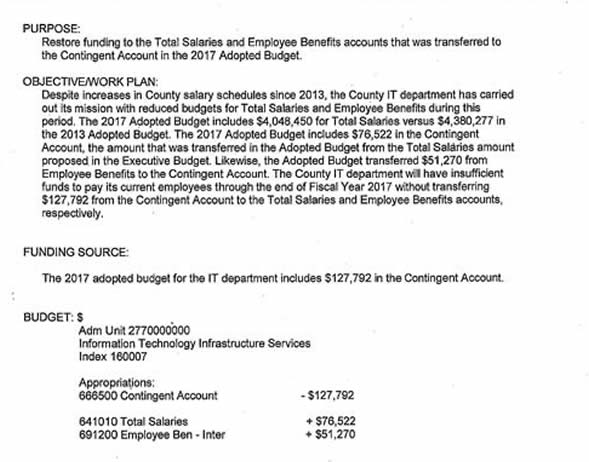
- Transfer money from contingency to salary and employee accounts
-
Created Senior Systems Programmer as succession; not move new body, but move existing for promotion; not looking for entire $126,000, but asked initially for few thousand needed for salary increase
-
The move to contingency took funding needed to pay for this staff member; will run out of money to pay for salaries
- Not looking to fill position or create, but possibly look at this down the road; key staff member
- Need funding back into salaries and budget to make payroll in 2017
Mr. Knapp asked if it is for an existing employee promotion primarily, and Mr. Sexton replied correct. That was the original intent. The understanding was to move a new person, which would require the entire funding, but that was not what the ask was for. Mr. Knapp questioned if they need the entire amount for the move, and if it is the total amount in contingency. Mr. Sexton responded it is the total amount in contingency.
Mr. Jordan said they are moving someone from an existing position for promotion, and Mr. Sexton agreed saying that is what they were looking to do.
**Mr. Plochocki arrived at the meeting.
Mr. Jordan wanted to know where the funding would go for the position the person is moving from. Mr. Sexton responded they would unfund that. Mr. Jordan said the funding would then be available to fund this position. Mr. Sexton said no; the ask was for the promotion amount. The wage increase is approximately $2,000 until the person passes probation. Mr. Jordan said there is already someone in a lower position, which is funded. If they are promoting this person, then the money from the old position would be available to pay for this position minus $2,000. Mr. Sexton responded that is not the case. When the money was moved into contingency, it was taken from the existing position. Mr. Jordan asked if the contingency amount is funding the lower position. Mr. Knapp commented that because the Legislature put the money into contingency, IT will be short on payroll. Mr. Sexton agreed. Mr. Knapp said the promotion is the precipitation to move the money now. Mr. Sexton said exactly.
Mr. Sexton gave an example saying the total amount of salary and benefits is $126,000 for this position, and the current position is $120,000. $120,000 was moved out, so there is only $6,000 left to pay for the existing position. Mr. Knapp (clarifying what Mr. Jordan said) stated if the current position is unfunded when the person is promoted, then that money will be available for the new position. Mr. Sexton explained that it is not funded, because it is sitting in contingency.
Mr. Knapp responded to Mr. Ryan that the Legislature put the $127,792 in contingency. Mr. Ryan asked if Mr. Sexton wants the Legislature to release the money from contingency to cover increased costs for one employee that is getting an upgrade. Mr. Sexton replied this was the original intent. IT is not creating the position, but will need the money to pay for the current position. The original ask was an increase for the promotion amount. Mr. Sexton stated promotions in the County are done by creating a new position. Once the person is in the position, the existing position is unfunded.
Mr. Ryan asked how much the person is making now, and Mr. Sexton answered between salary and fringe probably in the neighborhood of $120,000 ($80,000 salary, $40,000 benefits). Mr. Sexton said when they ask for a new position (Senior Systems Programmer), IT does not ask for the whole salary, but the promotion increase. Mr. Sexton responded to Mr. Ryan that the current title is Systems Programmer. Mr. Ryan asked what the difference is between the titles in terms of salaries and benefits. Mr. Fisher replied it is the difference between a grade 14 and grade 15. Mr. Sexton said the initial increase in salary is $2,000 during the probation period, and at the end of the probation period the full increase is $8,000. When IT wanted to create the position, the budget included the $8,000 increase. Mr. Sexton believes the thought was that a new person was to be put in the position, and the entire $127,000 was moved to contingency.
Mr. Jordan asked for clarification. The 2017 adopted budget is $4,048,450. Mr. Jordan thought Mr. Sexton was saying that the Legislature only gave IT $3,928,000, because $127,000 was put into contingency. So even with the given budget, there is not enough funding to pay the person in the current position; because of contingency. Mr. Jordan said Mr. Sexton is now talking about an $8,000 difference. Mr. Sexton agrees with what Mr. Jordan just stated. If the overall salary budget was ~$4 million, then it is currently that less $127,000. Mr. Jordan asked if the $4 million anticipated this increase, and Mr. Sexton said yes.
Mr. Knapp said if the committee says no, then at the end of the year IT will be short $120,000 give or take, and Mr. Sexton agreed. Mr. Knapp said Mr. Sexton is here for the promotion, but more so for the money for salaries. Mr. Sexton stated IT is not asking for the promotion anymore; they only want the funding back. Mr. Sexton replied to Mr. Jordan that the initial promotion amount would be $2,000, but right now they will not have all the funding available without getting this money.
Mr. Knapp said if they release the money, then how will IT look for the end of the year with budget and salary savings. Mr. Sexton believes they will be in good shape.
Mr. Jordan thought Mr. Sexton said the original amount included the money for the promotion. Mr. Sexton said correct. Mr. Jordan asked why he is asking for the entire amount of contingency if they are not moving this person right away. Mr. Sexton would be agreeable to moving the existing salary and fringe from contingency. Mr. Knapp asked what that would be. Mr. Sexton will get the exact amount, and said they would ask for the $127,000 less the promotion amount. It will be approximately $119,000 - $120,000. Mr. Knapp said they would come back for around $7,000 - $8,000 later in the year, and Mr. Sexton said probably.
Mr. Jordan asked if there are any other vacant funded positions on the roster. Mr. Sexton responded there are a couple, but there is no money behind it. IT is not looking to fill anyone new this year, because of the tight budget. Mr. Jordan wanted clarification that they have no vacant funded, but they do have vacant unfunded. Ms. Clark mentioned salary savings. Mr. Knapp commented that there are a few with money, but they are there to make the salary savings numbers, and Ms. Clark agreed.
Chairman Shepard stated that the committee will not be voting on this item today. There will be big picture conversations coming up in the next week. Mr. Knapp agreed. There will be meetings before this goes to Ways and Means (since it was considered, it can go to Ways Means).
b. Personnel Resolution - Create R.P. 01 102700 2209, Account Clerk I, Grade 04 @ $32,670 - $36,059 effective June 10, 2017; Abolish R.P. 01 102700 0784, Account Clerk Typist I, Grade 4 @ $32,670 - $36,059 effective June 10, 2017
A motion was made by Mr. Knapp, seconded by Mr. Ryan, to approve this item. Passed unanimously; MOTION CARRIED.
The meeting was adjourned at 10:52 a.m.
Respectfully submitted,

JAMIE McNAMARA, Assistant Clerk
Onondaga County Legislature
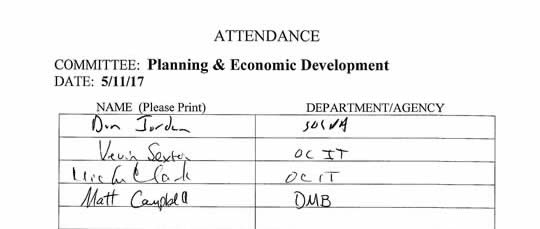
* * *
JOINT MEETING OF COUNTY FACILITIES COMMITTEE AND WAYS & MEANS COMMITTEE MINUTES – MAY 11, 2017
CHAIR DAVID H. KNAPP, CHAIR JUDITH A. TASSONE
COUNTY FACILITIES COMMITTEE MEMBERS PRESENT: Chair Tassone, Mr. Plochocki, Dr. Chase, Ms. Cody
MEMBERS ABSENT: Mr. Dougherty
WAYS & MEANS COMMITTEE MEMBERS PRESENT: Chair Knapp, Mr. Jordan, Mrs. Ervin, *Mr. May, *Ms. Williams
MEMBERS ABSENT: Mr. Kilmartin, Mr. Shepard
ALSO PRESENT: See attached list
Chair Knapp called to the meeting to order at 11:35 A.M.
1. ONONDAGA COMMUNITY COLLEGE: Dr. Casey Crabill, President
a. Adoption of Annual Budget for Onondaga Community College for the Fiscal Year September 1, 2017, to August 31, 2018, and Authorizing the County Executive to Enter into Contracts with other Governmental Units in which Appropriations and Revenues are Approved by the Adoption of the 2018 Budget
Dr. Crabill:
-
Introduced Sarah Gaffney, Mark Manning, Carol Obernesser, and Linda Kelly from Financial Services, and Sue Tormey; finance team present to assist in answering questions
*Mr. May and Ms. Williams arrived at the meeting.
- Thanked committee for continued capital support and presented photos of some of the results
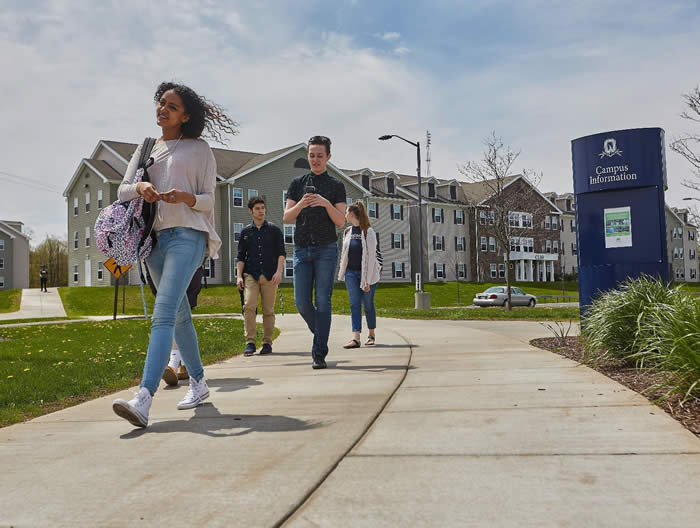 

-
Hospitality program redesigned, 100% state funding via SUNY 2020 grant, added entrepreneurship to the program, many students interested in learning hospitality skills and eventually opening their own establishment; image of student restaurant, now have real restaurant furniture, learn how to breakdown and increase setup to match reservations, has been great experience, have been in new location since January
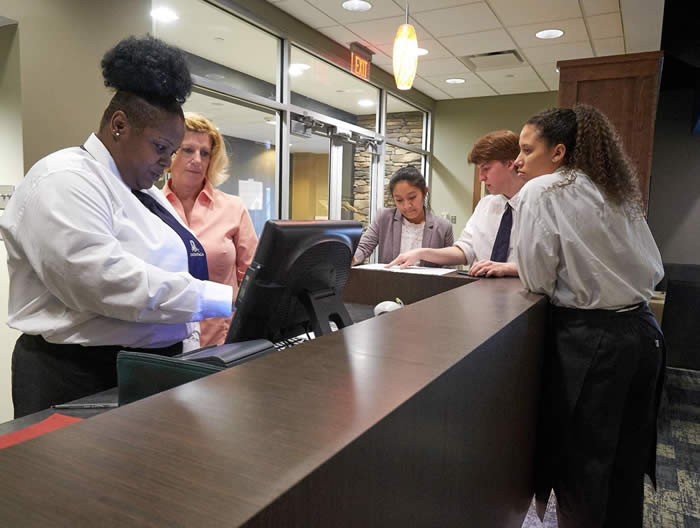 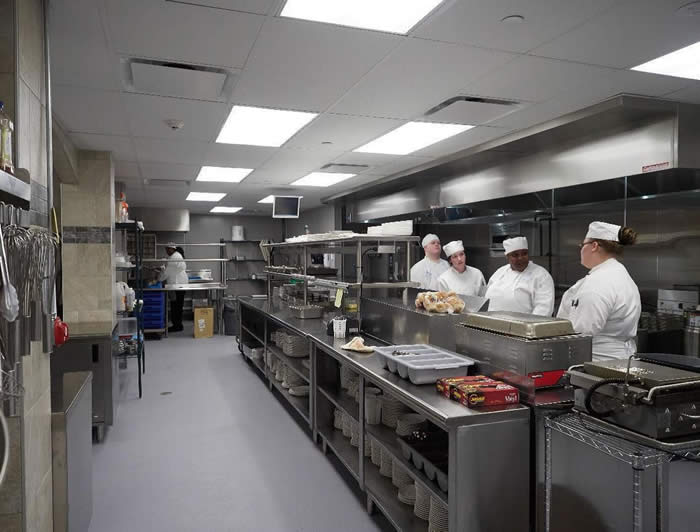
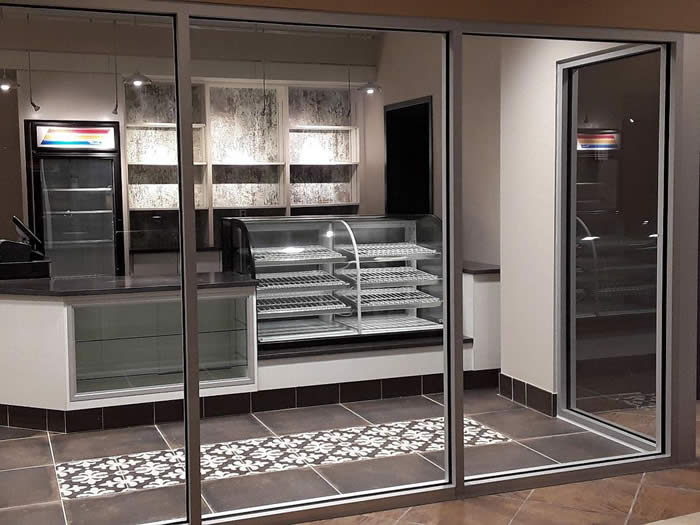
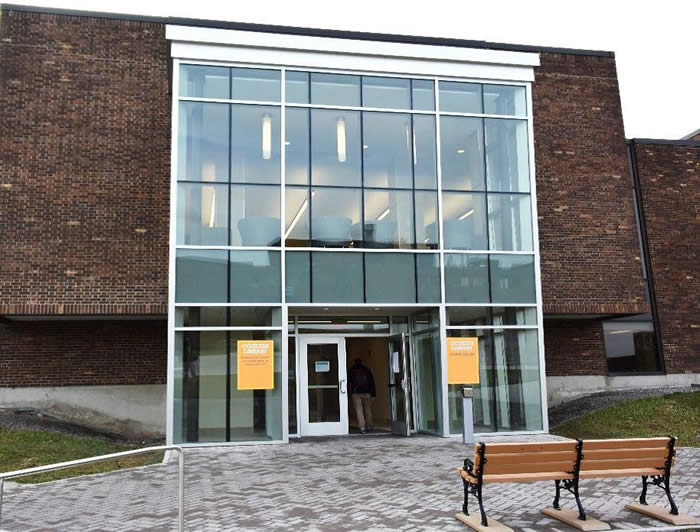 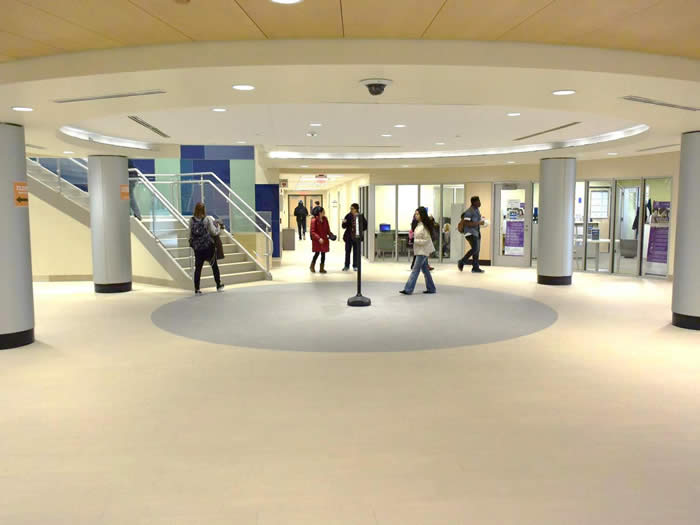
-
2 years ago County provided capital for the Coulter Library building, library hadn’t changed since Neil Armstrong hit the moon, refreshed to capture the way students need to learn to be effective in the workplace, added additional study space
- Access to Career Services office available while using the library (See above photo -office door located on right)
 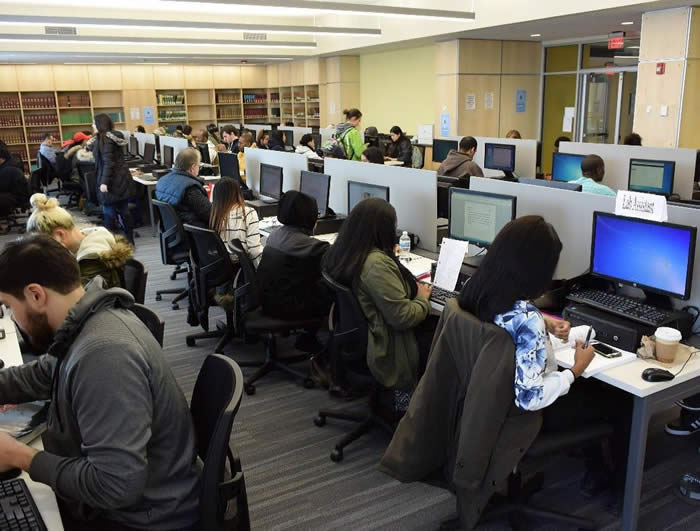

-
Added technology – previous design could not accommodate necessary technology, most things now online, goal to teach students how to evaluate online resources and use creditable and authoritative information; still have books
-
Thrilled with support provided for capital; no request this year because they are completing these projects, still have sprinklers, roof, and carpet refresh for Ferrante Hall this summer – will conclude capital apportionment from 2 years ago; launched 5 year development of Facilities Master Plan for critical maintenance
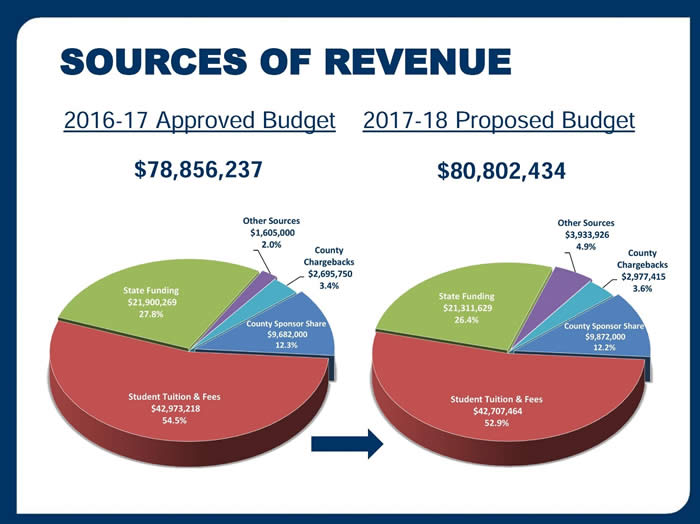
-
State funding projected to decline $580,000, result of 2 phenomenon - state increased FTE allocation by $50 but enrollments dropped for community colleges
-
Formula - state totals all credits taught and divides by 30, equals 1 fulltime equivalent FTE, not unusual for community college FTE to be made up by 3 or 4 students taking 1 to 3 course, each student has to be registered, advised and financial aid processed, economy of scale does not match FTE, awkward funding formula; State challenged SUNY to look at funding formula and how it might be handled in the future
-
Solved fair amount $589,000 funding problem over the last few months, challenged by increased healthcare premiums and contractual wage increases of 2% to 2.25% - some negotiated by OCC and others by the County; managed to save in some areas but not others

- Percentage change overtime - County Sponsorship does not include capital funding
- Percentages remain fairly stable in proposed budget

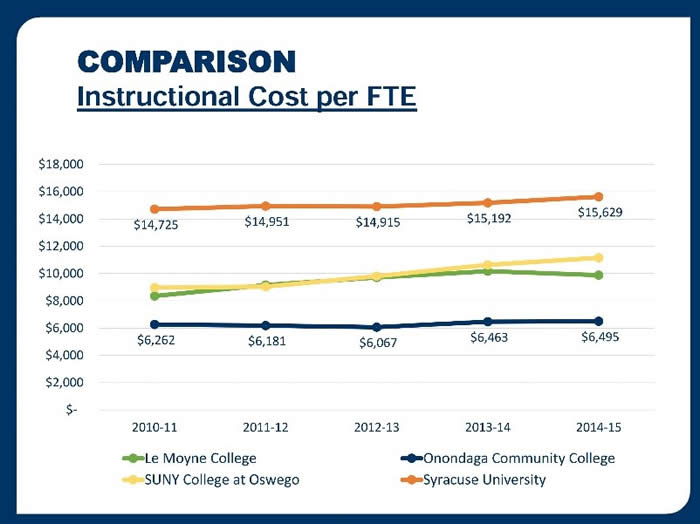
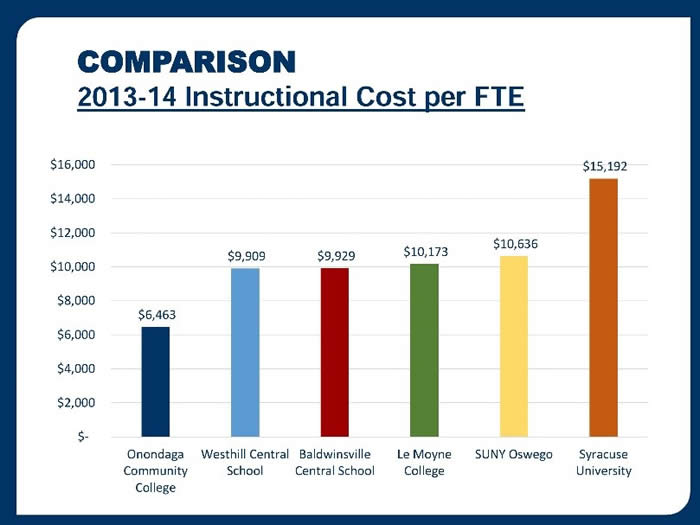
- OCC per student expenditure pretty flat, efficient instructional costs compared to both local public and private, and local high schools
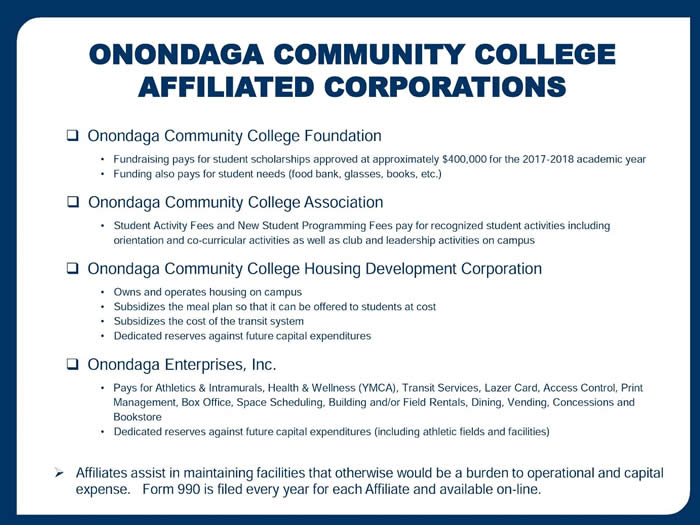
-
Affiliated corporations contributions reduce college costs – two largest contributions are dedicated reserves for future capital expenditures under both the Housing Development Corp. and Onondaga Enterprises, each is directed to be kept robust to ensure future costs for residence halls and athletic facilities never come back on the college, i.e. furniture, roofs, athletic fields, turf, etc.; provides comfort going forward
-
Total request $190,000, holds student tuition flat for the first time in 9 years, in part to understand the impact of the governor’s new scholarship; not permitted to increase tuition for students qualifying for Excelsior Scholarship –only part time students would pay increase if raised, tend to be working adults without any access to financial aid, good year to pause to understand impact of scholarship and how to best manage affordability for returning adults
Mr. Plochocki asked if there was an educated guess as to what the future would look like. Dr. Crabill said that since the state budget passed we have received more than 1,300 inquiries about the scholarship. The regulations won’t be announced, from Albany, until May 25. Here is what we know:
-
Last dollar award - NYS TAP and Federal Pell funds come off tuition bill first, difference made up by Excelsior up to maximum of $5,500; max doesn’t impact OCC as tuition is $4,875
-
Students receiving Excelsior funding required to earn 30 credits per year, with 2.0 or better for OCC students – law states grade average must be whatever is required for graduation or better
-
Must consistently stay in school unless called for military service or documented medical catastrophe
-
Students dropping below 30 credits are out of the program and owe for the last semester – concerned about tracking and collecting
-
Student must complete a degree with 2 years of funding - only counts for degree eligible credits, no remedial work covered by award; can take degree to public 4 year and complete bachelor's degree under the same criteria
-
Persons with associate’s degree may go back to school for a bachelor’s degree – cannot go back for a second associates degree; process designed for moving students to completion of bachelor’s degree in 4 year approach
-
Students have full calendar year to earn 30 credits – can go to summer school if credits weren’t reached in spring and fall but award does not pay for summer school
Mr. Jordan asked when this would impact OCC’s budget. Dr. Crabill said that the portion of tuition that would have been paid by the student will be paid by the state via an end of year disbursement. In the first year we will have to figure out the cash flow challenges, but once we have a year under our belt that part should settle itself out.
Chair Knapp asked if they were beginning to see an uptick in registration. Dr. Crabill said that fall registration started at the end of March with continuing students first, so you would expect to see them in. Two information sessions have been advertised, one is already full with 250 seats. There is a lot of interest. They are also hosting someone from NYS Higher Education Services Corporation on campus next Wednesday, and will be providing a presentation for families. It is a really short time period to get the information out, and students cannot begin to apply for this money until the application is made public in June. We are tracking all 1,300 inquiries and will make sure they receive the application.
Chair Knapp asked the average historic number for an incoming class. Dr. Crabill replied that’s hard to say; new to us is about 3,200 students per year.
Mr. Jordan asked if the tuition reimbursement was fixed at the current level and how future tuition increases would be factored in. Dr. Crabill said that the law fixed tuition at the 16-17 level for 4 years. Community colleges have said their reset should be every 2 years, but that will take a change in statute. It is unclear whether that will happen at the tail end of the current session or be brought up at the next session.
Mr. May said that other sources of revenue, although small compared to the other funds received, was up about 150%, and asked what this was attributed to. Dr. Crabill said that the Housing Development Corporation staff used to be employed by the corporation, which she was uncomfortable with from a liability standpoint. The relationship has been changed so that the contract for work is with the corporation, they pass the money, but the staff is employed, managed, and accountable to the college. Mr. May said that there was a corresponding expense to the revenue and Dr. Crabill agreed.
Referencing FTE dips, Mr. May asked how the college’s penetration or enrollment corresponds with high school population. Dr. Crabill said that the penetration level has remained study even during those dips. We are seeing between 19% and 26% of the local high school graduates come to OCC depending on the district. One big drop in FTE’s is in reference to the states change in funding - used to count the courses for Jobs Plus, stopped about 2 years ago. Mr. May said that this was the 7% or 8% lost back then and Dr. Crabill agreed.
Mr. May said that 2013-14 instructional cost per FTE were used for comparison and asked if anything changed from a gut standpoint. Dr. Crabill replied that those numbers were used because they were the numbers they were able to get from the school districts. The chart comparing colleges is more current data. Mr. May asked if this was an all-in or apples to apples comparison. Dr. Crabill said that it was apples to apples instruction. Mr. May said that you don’t have busing or things such as that. Dr. Crabill agreed adding, nor do we have special education or things contracted with BOCES, that is why we used instructional costs.
Mr. Jordan asked how instructors were compensated. Dr. Crabill replied that fulltime salary are paid on a salary scale and adjunct facility are paid by course.
Chair Knapp asked the requests for the past four years. Dr. Crabill said that we requested and received $124,000 my first two years, last year we did not make an additional operating request, and this year we are asking for $190,000.
In reference to chargebacks, Chair Knapp said that Cayuga Community College is targeting us. Dr. Crabill said that 65% of their students are out of county and their budget strategy is to keep boosting that up, which drives their chargeback rates up. From a recruiting standpoint we have been working to keep them out of our schools, and to get more closely connected with Onondaga County families so that they understand, from a qualitative standpoint, there is no comparisons between facilities, programs, and quality. We beat them on every indicator. For some students we are not far enough away, but they don’t even have resident halls. We continue to try and get the word out - all four recruiters visit local high schools at least 4 times per year, we do open admits, and hold larger open houses. Chair Knapp said that when you look at all the other community colleges within the state the chargebacks for that one just jumps off the page. Dr. Crabill agreed, adding that it was ridiculously high. Mr. May said that it was dirty. Dr. Crabill said that it was one of the things that was not about education. Chair Knapp said that it is unfortunate.
Dr. Crabill thanked the committee and assured them that she is careful with every dollar and would never ask for stuff not needed.
Chair Knapp thanked Dr. Crabill. He then asked committee members to reach out to Dr. Crabill and her staff with any questions going forward and to share learned information with the group.
No action was taken on this item.
The meeting adjourned at 12:04 P.M.
Respectfully submitted,

KATHERINE M. FRENCH, Deputy Clerk
Onondaga County Legislature
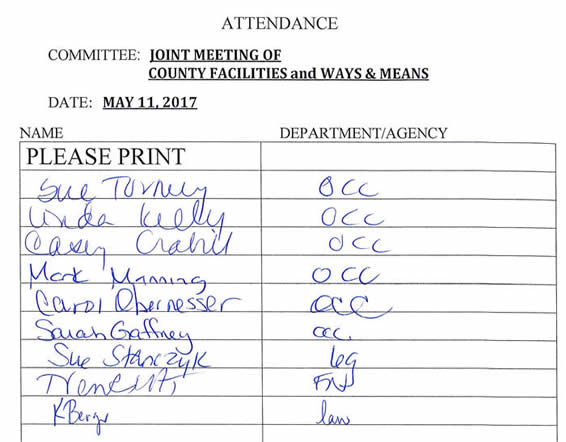
* * *
PUBLIC SAFETY COMMITTEE MINUTES – MAY 18, 2017
BRIAN MAY, CHAIRMAN
MEMBERS PRESENT: Mr. Liedka, Mr. Ryan
MEMBERS ABSENT: Mr. Holmquist, Mr. Dougherty
ALSO ATTENDING: Mr. Knapp and see attached list
Chair May called the meeting to order at 12:09 p.m. A motion was made by Mr. Liedka, seconded by Mr. Ryan, to waive the reading of the proceedings from the previous committee. MOTION CARRIED. A motion was made by Mr. Liedka, seconded by Mr. Ryan, to approve the minutes from the previous committee. MOTION CARRIED.
1. HILLBROOK: Damian Pratt, Director Juvenile Justice and Detention
a. A Resolution Authorizing Improvements at Hillbrook Detention Facility, in and for the County of Onondaga, New York, at a Maximum Estimated Cost of $394,000 and Authorizing the Issuance of $394,000 Bonds of said County to Pay Costs Thereof ($394,000)
Chair May said that this item was originally on the agenda last November. There was some confusion as to which committee it should have gone to, and which committee it was sitting with, therefore it was not addressed.at that time. Last month Ms. Rooney and Mr. Pratt explained the purpose for the bond resolution. Keeping it simple, these are facility upgrades, some of which are security and/or safety related for both the children retained in facility, and staff. The item was pulled for a variety of reasons but is back on the agenda today to focus on mission critical items. The amount of the request is going to be pulled back to that which is mission critical. Next month we will revisit the remaining - when we have clarity on the rest of the costs. Part A needs to be completed before we can move on. We want to pay close attention as to how we are authorizing expenses and this is a really good approach. It will allow the committee not to miss a beat in the process of upgrading the facilities as needed.
Mr. Pratt:
- No real upgrades since 2006, current security system, control panel, and camera system all antiquated, much of the equipment is down, compromising safety of staff and residents
- Quote received late last year (See pages 2- 4), upgrades necessary for compliance with Office of Children and Family Services and detention regulations

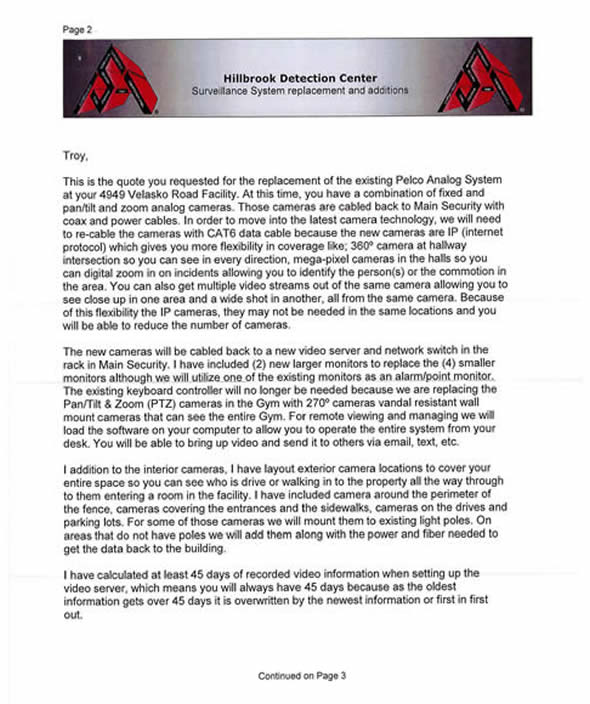

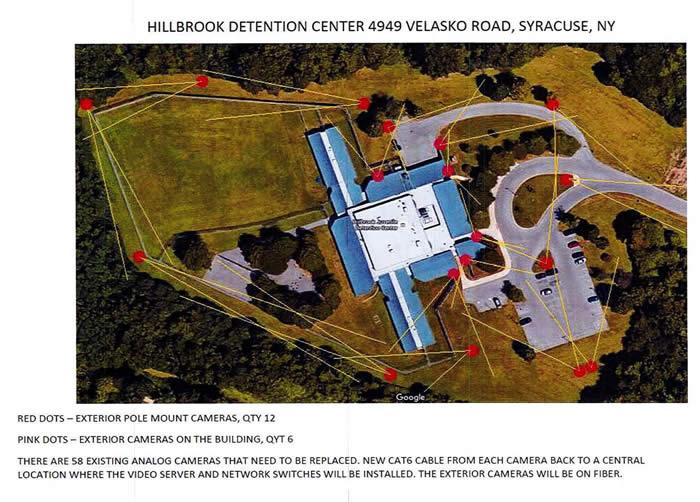
- 45 day surveillance recording required, adding exterior cameras, most secure facilities in NYS have secured gate entry – Hillbrook doesn’t, increases need as facility doesn’t have double perimeter fenced system for entire property; $254,000 for essential safety components
- Later need to address mobile duress system, has been down for several years – system allows each employee to wear a panic button, all staff respond in an emergency, current practice is for all frontline staff to radio the control panel in an emergency, not ideal situation when staff member is unable to communicate
In answer to Mr. Ryan, Mr. Pratt said that approval of this funding will allow them to make that secondary upgrade for the duress system. Chairman May said that as discussed, it is part of step 2. It is undefined as to exactly how much that will cost. We will be able to define part B/step 2 once this component is set and in place.
- Other elements of Step 2:
-
install slats on fencing, back of Hillbrook dorms can be clearly viewed from OCC, confidentiality issue for residents, slats also prevent climbing of fence – had previous escape
-
improvements to gymnasium doors, currently operate by lock and key – not control panel, residents have kicked them out
A motion was made by Mr. Liedka, seconded by Mr. Ryan, to amend the resolution amount to $253,500. Passed unanimously; MOTION CARRIED.
A motion was made by Mr. Ryan, seconded by Mr. Liedka, to approve the item as amended. Passed unanimously; MOTION CARRIED.
2. SYRACUSE COMMISSION ON HUMAN RIGHTS: Barrie Gewanter, Executive Director
a. Confirming Reappointment to the Onondaga County/Syracuse Commission on Human Rights (Montanette Murphy)
Ms. Gewanter:
- Term officially ended December 2016, full commission would like reappointment
A motion was made by Mr. Liedka, seconded by Mr. Ryan, to approve this item. Passed unanimously; MOTION CARRIED.
3. EMERGENCY COMMUNICATIONS: William Bleyle, Commissioner
a. Amending the 2017 County Budget to Accept Funds from the New York State 2016 Statewide Interoperable Communications Grant Program, and Authorizing the Execution of Contracts ($1,404,362)
Mr. Bleyle:
-
Grant supports improvements to interoperability and operability of communication systems, propose using funds to refurbish microwave network installed in 2005 - analog system
-
2010 went to digital radio system costing $35 million, needed retrofits to make digital radio system work on analog microwave network, rapid technology increases made it challenging to get network connectivity for the entire microwave network and there aren’t enough pipes to the tower for radio system software; going to an IP/MPLS network – converts everything to digital over the microwave and increases system throughput
-
Avoids capital request, upgrades network and fills in some gaps – due to limited funds towers installed for digital radio system in 2009 have only one microwave link, all other towers in the system are part of a sonic loop around the county - if one dish goes out of service it reverses itself and goes back around the loop for connectivity, having just one link to 3 of the towers poses potential point for failure – had times when links went down, very critical
Mr. Ryan asked if he was correct in saying that without these funds, if the tower goes down, the redundancy fails. Mr. Bleyle replied that the first phase is to move from an analog to digital based microwave system. The other part is to complete the loop so that the 3 remaining towers are protected and have a secondary path back to the 911 center.
Mr. Ryan said that this has to be done regardless, in order to digitally upgrade the infrastructure, tie everything together, and keep up with changes in technology. Mr. Bleyle agreed, i.e. radio system - operating system upgraded every 2 years and future systems will require a digital backbone. Also, there is a capital plan for an alternate prime site and when that happens it will require a digital microwave system. This is preparing for the future and avoids a request for the microwave.
Mr. Ryan said that future expenditures may be covered by grant funds. Mr. Bleyle said that this would all be covered by grant funds and will lower maintenance costs. The microwave system was built in 2005 and is becoming more and more expensive to maintain. Long term it will stabilize costs and he won’t have to ask for capital funds to do it.
A motion was made by Mr. Liedka, seconded by Mr. Ryan, to approve this item. Passed unanimously; MOTION CARRIED.
b. Amending the 2017 County Budget to Accept Funds from the New York State Department of Homeland Security and Emergency Services’ Public Safety Answering Point (PSAP) Grant Program, and Authorizing the Execution of Contracts ($188,364)
A motion was made by Mr. Ryan, seconded by Mr. Liedka, to approve the item. Passed unanimously; MOTION CARRIED.
4. A Local Law Establishing an Animal Abuse Registry and Prohibiting Animal Ownership by Animal Abuse Offenders within Onondaga County (Sponsored by Mr. Liedka, Mr. May, Mrs. Tassone, Mr. Knapp)
Chair May said that this resolution has been in the works for a couple of months. Much work has gone into it, all the way down the line, most recently the Law department aligning legislative preferences for the law with the Sheriff’s desire for how the program works going forward. A couple of new provisions have been added to what was originally seen a day or two ago. The two changes most relevant to today’s conversation are the database itself, the listing of animal abusers will be available to the public, and the provision for someone on the list to appeal to a judge for removal, i.e. elderly person suddenly unable to care of them self, therefore unable to take of their animals.
Chair May thanked the many guests present, and explained that these are work sessions of the legislature - there isn’t an opportunity to speak, customarily.
Sheriff Conway:
-
Present in support of the measure; important to mention there is no cost
-
Acknowledged people present and the organizations they represent (See attendance), supports their work and appreciates them taking the time to appear
-
Sheriff’s office will maintain registry on its website; 6 counties in NYS and NYC presently have an animal abuser registry, first created in 2010; previously presented copy of Niagara County local law, wording and legislation almost identical to the other 5 counties in NYS
-
Local law presented consistent with what other counties have done - intent is to bring awareness to the community of people that should not be in control of an animal based on their past actions, a simple measure allows people to check registry before allowing person to acquire an animal
- Along same lines as sex offender registry - determined by court of law
Sheriff Conway said that the people present could speak to what is going on with our animals. Mr. Liedka said that he appreciates the support. He does not think we need encouragement from them as we are all on the same page, as far as where we want to go with this law. It is not identical to the other counties, but at the end of the day it achieves the same thing. Once approved, the next step is to make this a state law, which is currently in discussion. If there were any loop holes, per se, it would be that abusers could find neighboring counties where the law doesn’t exist.
Mr. Liedka asked how they could educate sellers to react to persons on the registry – if abusing animals, could be unsavory at the least. Questioned what other counties were doing when this occurs, should they just deny the person or reach out to the Sheriff’s department. Sheriff Conway replied that he will continue to work with the other 6 counties to see what has transpired since their law was put into place. This comes down to awareness to start with. Having a place where someone can check before letting the animal go to an abuser is what is most important. Notifying someone could be helpful and he intends to continue to work with the organizations in Onondaga County regarding this. There is a connection between people who abuse animals and people who abuse children, while that is not the intent here. The intent is to bring awareness so that if someone tries to acquire an animal, there is at least a little bit more of a check and balance before that animal falls into their hands.
Chair May said that what he likes about the final format is that anyone buying or selling an animal can reference the database. It brings really broad value to this process. Sheriff Conway said that, like any local law, much of this is making people who will be impacted by the law aware of and familiar with the law, and we can assist them once that happens.
Chair May said that based on conversations he had after the announcement, he has a strong suspicion that the agencies interested, behind, and in support of this effort are going to be our best advocate for the state bill. Part of the reasons that this is a no-cost innovative is the broad community support among the experts.
Mr. Liedka said that he didn’t need to go on any further, this is probably the easiest law he has ever had to pass. He thanked the Sheriff and animal advocates for bringing this to their attention. It is an absolute no brainer and long overdue. Chair May agreed. Mr. Ryan also thanked the organizations, adding that he appreciates their hard work.
Mr. Ryan referenced Section 6 (c) “Any Animal Shelter or Pet Seller who knowingly violates the prohibition against selling, exchanging, or otherwise transferring the ownership of any animal to any Animal Abuse Offender shall be guilty of a violation and subject to a fine not to exceed five thousand dollars ($5,000)”, and said that there are people selling animals who will not know, or bother to check the registry. Their primary goal is to sell the animal, and they could say they did not know. Sheriff Conway said that like most laws, it is subject to interpretation. It ultimately falls back into the hands of the court and things, such as intent, would have to be proved. He is not suggesting that this is the be-all/end-all. Again, it is making people aware of people who should not have an animal. Beyond the law being placed into effect and the registry being formed, a lot of this will then turn to education. He is confident that together, with the people in this community who are advocates for animals, we can have our best effort at making sure that people are aware of the registry, know what the requirements are, and follow those requirements. Situations where something falls between the cracks can be addressed so that they don’t occur again.
Mr. Ryan said that a lot of hard work went into this and it is a good start. To Legislator Liedka’s point, hopefully state lawmakers recognize that there is a will for all counties to participate in this. We can only control the legislative side, but he hopes that they are fined, when there is intent, on the judicial side.
Mr. Liedka said that they are counting on the Sheriff and local allies to get the word out, as they come in contact with people regarding pets all the time. It is also on us to get the word out and narrow the number down to a small one.
Sheriff Conway said that the people present have been lobbying for a statewide registry and he is sure they will continue to do so. He plans to advocate with follow Sheriffs so that every county in the state has a registry, or there is a statewide registry, which makes more sense.
Mr. Knapp said that he was very happy to see that the law now pertains to all animals.
Chair May said that he tends to look at the business side of things. For the record, “The County Law department’s job is to protect the interest of the county, and while from day one this seemed like a good emotionally correct thing to do, the right thing to do, the business of the county requires due diligence to go beyond the emotionally correct thing to do, the morally correct thing to do”. Chair May thanked Ms. Berger for steering them down a path that gets them to something they can live with. He believes Ms. Berger would be the first to say it is not perfect but it is more than a great place to start. They have something really good in front of them and he is excited to put it forward.
A motion was made by Mr. Liedka, seconded by Mr. Ryan, to approve this item. Passed unanimously; MOTION CARRIED.
Sheriff Conway asked that the process going forward be explained. Chair May said that the item would be considered at the next session, June 6th. Ms. Berger said that once the law has been approved the County Executive holds a public hearing. If she signs off on the local law it is then sent onto the state for recording. Mr. Liedka said that if people want to be heard, prior to the public hearing, they are welcome to speak during public comment at the June session.
The meeting adjourned at 12:45 p.m.
Respectfully submitted,

KATHERINE M. FRENCH, Deputy Clerk
Onondaga County Legislature
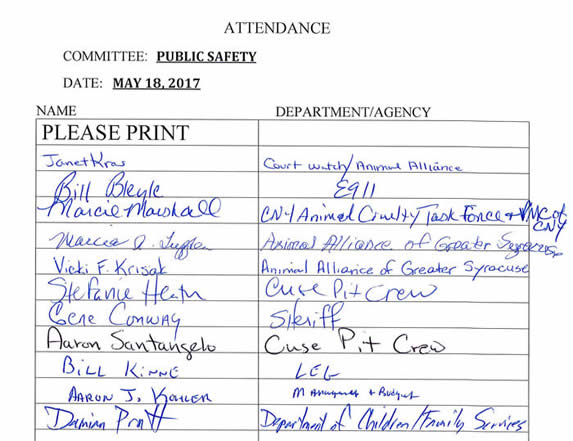
* * *
WAYS AND MEANS COMMITTEE MINUTES
May 22, 2017
David Knapp, Chairman
MEMBERS PRESENT: Mr. Jordan, Mr. Shepard, Mr. Kilmartin, Ms. Williams, Mrs. Ervin, *Mr. May
ALSO PRESENT: Chairman McMahon, see also attached list
Chairman Knapp called the meeting to order at 9:20 a.m. A motion was made by Mr. Kilmartin, seconded by Mrs. Ervin, to waive the reading of the minutes of the proceedings of the previous meeting. MOTION CARRIED. A motion was made by Mr. Kilmartin, seconded by Mrs. Ervin, to approve the minutes of proceedings of the previous committee. MOTION CARRIED.
CONSENT AGENDA
1. CNY ARTS:
a. Amending the 2017 County Budget to Make Funds Available to CNY Arts ($125,000)
2. HILLBROOK:
a. A Resolution Authorizing Improvements at the Hillbrook Detention Facility in and for the County of Onondaga, NY, at a Maximum Estimated Cost of $253,500 and Authorizing the Issuance of $253,500 Bonds of said County to Pay the Costs thereof ($253,500)
3. EMERGENCY COMMUNICATIONS:
a. Amending the 2017 County Budget to Accept Funds from the New York State 2016 Statewide Interoperable Communications Grant Program, and Authorizing the Execution of Contracts ($1,404,362)
b. Amending the 2017 County Budget to Accept Funds from the New York State Department of Homeland Security and Emergency Services’ Public Safety Answering Point (PSAP) Grant Program, and Authorizing the Execution of Contracts ($188,364)
4. TRANSPORTATION:
a. Amending the 2017 Onondaga County Budget to Accept $759,195 in Extreme Winter Recovery Funding from the New York State Department of Transportation, and Authorizing the Execution of Agreements ($759,195)
b. Amending the 2017 County Budget and Authorizing the County to Pay in the First Instance 100 Percent of the Non-Federal Aid Eligible Costs at a Total Maximum Amount of $540,000 for the Design (Scoping I-VI) and Construction Phases of the South Street Culvert Over Smokey Hollow Creek Project, PIN 3756.44, and Authorizing Execution of Agreements ($540,000)
c. Moved to regular agenda.
d. Amending the 2017 County Budget to Fund in the First Instance 100 Percent of the Federal Aid Eligible Costs at a Maximum Amount of $520,000 for the Design (Scoping I-VI) and Construction Phases of the Centerline Audible Roadway Delineators (C.A.R.D.) Installation Safety Project, PIN 3756.31, and Authorizing the County Executive to Enter into Agreements to Implement the Intent of this Resolution ($520,000)
e. Amending the 2017 County Budget to Fund in the First Instance 100 Percent of the Federal Aid Eligible Costs at a Maximum Amount of $392,000 for the Design (Scoping I-VI) and Right-Of-Way Incidentals Phase of the East Taft Road Paving Project, PIN 3756.23, and Authorizing the County Executive to Enter into Agreements to Implement the Intent of this Resolution ($392,000)
f. Approving the Right-Of-Way Acquisition Phase of the Electronics Parkway 2R Paving Project, PIN 3755.71, Agreeing to Participate and Pay up to 100 Percent of the Non-Federal Share of the Project and Accepting Title to the Acquired Right Of Way
g. Approving the Right-Of-Way Acquisition Phase of the Fremont Road Bridge Over Butternut Creek Project, PIN 3755.70, Agreeing to Participate and Pay up to 100 Percent of the Non-Federal Share of the Project an d Accepting Title to the Acquired Right Of Way
h. Approving the Right-Of-Way Acquisition Phase of the Old Route 5 & Warners Road Paving Project, PIN 3755.69, Agreeing to Participate and Pay up to 100 Percent of the Non-Federal Share of the Project and Accepting Title to the Acquired Right Of Way
i. Amending the 2017 County Budget to Pay in the First Instance 100 Percent of the Federal and State Aid Eligible Costs at a Maximum Amount of $1,567,500 for the Oran Delphi Road Bridge Over Limestone Creek Project, PIN 3755.22, and Authorizing Execution of Agreements ($1,567,500)
j. Amending The 2017 County Budget To Pay in the First Instance 100 Percent of the Federal and State Aid Eligible Costs at a Maximum Amount of $1,140,000 for the Otisco Valley Road Bridge Over Nine Mile Creek Project, PIN 3755.23, and Authorizing Execution of Agreement ($1,140,000)
k. Amending the 2017 County Budget to Fund in the First Instance 100 Percent of the Federal Aid Eligible Costs At a Maximum Amount of $825,000 for the Design (Scoping I-VI) and Construction Phases of the Pedestrian Signal Safety Project, PIN 3756.32, and Authorizing the County Executive to Enter into Agreements to Implement the Intent of this Resolution ($825,000)
l. Amending the 2017 County Budget to Pay in the First Instance 100 Percent of the Federal and State Aid Eligible Costs at a Maximum Amount of $1,353,750 for the Design (Scoping I-VI) and Construction Phases of the Route 174 Over Nine Mile Creek Bridge Project, PIN 3756.40, and Authorizing Execution of Agreements ($1,353,750)
m. Approving the Right-Of-Way Acquisition Phase of the West Taft Road 2R Paving Project, PIN 3755.79, Agreeing to Participate and Pay up to 100 Percent of the Non-Federal Share of the Project and Accepting Title to the Acquired Right Of Way
5. WATER ENVIRONMENT PROTECTION:
a. A Local Law Authorizing the Extension of a Lease of County Property Known as James J. O’Connor Field within the City of Syracuse to the Syracuse Chargers Rugby Club, Inc. for Use in Connection with Rugby Activities
6. INFORMATION TECHNOLOGY:
a. Personnel Resolution - Create R.P. 01 102700 2209, Account Clerk I, Grade 04 @ $32,670 - $36,059 effective June 10, 2017; Abolish R.P. 01 102700 0784, Account Clerk Typist I, Grade 4 @ $32,670 - $36,059 effective June 10, 2017
Mr. Jordan asked that item 4c be moved to the regular agenda, as the Comptroller sent a letter informing everyone that we will be below our fund balance policy. Part of the plan to address that was to not utilize the OTASC bond refunding monies to pay for certain projects. Chairman Knapp moved the item to the regular agenda to be considered first.
A motion was made by Mr. Kilmartin, seconded by Ms. Williams, to approve the items listed on the consent agenda. AYES: 6; NOES: 0; ABSENT: 1 (May). MOTION CARRIED.
REGULAR AGENDA
4. TRANSPORTATION: Chris Rauber, Civil Engineer 3
c. Amending the 2017 County Budget to Fund in the First Instance 100 Percent of the Federal Aid Eligible Costs at a Maximum Amount of $520,000 for the Design (Scoping I-VI) and Right-Of-Way Incidentals Phase of the Canalways Trail Extension Project, PIN 3756.29, and Authorizing the County Executive to Enter into Agreements to Implement the Intent of this Resolution ($520,000)
- Originally it was one project and eventually split into 2 projects by recommendation of State DOT
- Originally the limits were from the State Fairgrounds to Hiawatha Blvd. – all to be locally funded for design phase
- Local funds were through Parks, not DOT; on an order with an existing contract Parks had with a consultant who started that work
- As project progressed, realized design cost was going to be much higher than anticipated
- Federal funds found for design phase--split into two because federal funds were from 2 different fund sources – recommended by State DOT
- New project created, funding with 80% federal funds, 20% local
- 20% local funds are including in 2017 work plan
*Mr. May arrived at the meeting.
Mr. Jordan said that the 2017 work plan indicated that the local portion was going to be funded with proceeds from refunding of OTASC bonds. Mr. Rauber said that the 2017 work plan also had construction in it, and the local share of that will be covered with tobacco funds, but not the design phase. Mr. Jordan said that it was his understanding that OTASC funds were not going to be used. Mr. Morgan said that they are being used, and the money has been set up in specific projects. Chairman McMahon said that the legislature will probably act to rescind that resolution. Mr. Morgan said that it can only be used for capital purposes. Mr. Voss said that the entire bridge project is all out of that money and the projects are underway. In answer to Mr. Morgan, Mr. Maturo said it has been put in year end 2016 as unappropriated revenue.
Chairman McMahon said that that Mr. Morgan’s office provided back up concerning the current fund balance-- the $5 million encumbered that we can unencumber, and the $3.5 million that was not going to be used. Mr. Morgan said that the $3.5 million is offsetting the cost of the interfund transfer from the general fund – will transfer from the general fund to the road fund and use that cash. Chairman McMahon asked how it can be tightened up legislatively. Mr. Morgan said that he didn’t think there was a need to. Chairman McMahon said that Mr. Jordan’s point is that it was part of dealing with the issue that we had dropped on us; now there is a plan that was worked on with Mr. Morgan’s office. Chairman McMahon said that Mr. Jordan’s concern is to stick to that plan, and he agrees. Mr. Morgan said that his forecast will show that the interfund transfers are reduced by $3.5 million – from the general funds to the county road fund.
Mr. Maturo said that the way this was budgeted was for the money to come into the general fund and move through roads to the capital. His office has moved it all of it into the capital, but there still is appropriated fund balance out there of $3.5 million. His opinion is that it should be taken out; put a resolution through to remove the appropriation of fund balance or else it’s going to sit out there. Chairman Knapp said that would clean it up; Mr. Maturo agreed. Mr. Morgan said it could be left until year end. Mr. Maturo, agreed, but you would always have the appropriation sitting out there, and if looking at the 10% fund balance you need to take into consideration the appropriated fund balance.
A motion was made by Mr. Kilmartin, seconded by Mrs. Ervin, to approve this item. AYES: 6; NOES: 0; ABSTENTIONS: 1 (Jordan). MOTION CARRIED.
1. COMMUNITY SERVICES ADVISORY BOARD:
a. Confirming Appointments to the Community Services Advisory Board (Tania Anderson, Diane Nappa, Juhanna Rogers, Reverend Dr. Regina Reese-Young)
A motion was made by Mrs. Ervin, seconded by Ms. Williams, to approve this item. Passed unanimously; MOTION CARRIED.
2. COUNTY CLERK: Chris Plochocki, Deputy County Clerk
a. Mortgage Tax Apportionment
- Pursuant to Section 261 of State Tax Law
- Mortgage tax between 10/1/16 – 3/31/17
- $4,032,585.24 total apportionment; down 6% from previous period; up 2% over the same period last year
A motion was made by Ms. Williams, seconded by Mrs. Ervin, to approve this item. Passed unanimously; MOTION CARRIED.
3. ONONDAGA COMMUNITY COLLEGE: Mark Manning, CFO
a. Adoption of Annual Budget for Onondaga Community College for the Fiscal Year September 1, 2017, to August 31, 2018, and Authorizing the County Executive to Enter into Contracts with other Governmental Units in which Appropriations and Revenues are Approved by the Adoption of the 2018 Budget
Chairman Knapp said that the OCC budget was presented at a joint meeting last week with County Facilities. They are asking for $190,000 increase; last year it was $0; the two years before were $125,000 each. The public hearing was held this morning.
Mr. Jordan said that the budget lists fund balance and available fund balance and asked if there is some portion of fund balance that is not available. Mr. Manning said that it is the fund balance and agreed with Chairman Knapp that it is not spoken for.
Mr. Jordan referred to in lieu of sponsored contributions. Mr. Manning said that it is charge back revenue that the college gets for students that come from other counties who bring a certificates of residence. Chairman Knapp asked if that money goes to offset capital. Mr. Manning said that it does not – there are two components. The money Mr. Jordan referenced goes towards the operating budget. What Chair Knapp is referencing is that the college gets $300 for FTE capital; it is remitted every year to the county, which helps to pay for the debt service. It is about $500,000/year. Any county that sends a student with a certificate of residence, OCC charges that county the charge back rate. This year it was $1,700/FTE and $300 for capital chargeback. The capital chargeback is not part of the budget – it is put in a liability account and remitted twice/year to Onondaga County to help pay debt service. The $300 is a statute – what all community colleges per SUNY regulations charge. Mr. Jordan asked if it is goes to an accumulating fund or towards existing. Mr. Manning said it goes toward existing. Right now Onondaga County pays about $4 million in debt service on bonds; the college remits that $500,000 or all that it receives. If the county had less than $500,000 debt service, OCC would only be required to remit that amount.
Mr. Jordan referred to the budget summary---there are different sources of revenue, and asked other sources, just shy of $4 million. Mr. Manning said that one of the large increases in that is what is received from an affiliate. The Housing Development Corp was brought over – those employees were brought into the college’s payroll, and are getting a chargeback from the Housing Development Corp. for salaries and benefits for those employees. Mr. Jordan asked if all of the affiliates are now under the college. Mr. Manning said that it is just the Housing Development Corporation employees - salaries and benefits. It is really revenue neutral.
Chairman Knapp asked about the chargebacks and the formula for chargebacks coming in. One key piece to chargebacks coming, where other counties are charged, is the local support percentage. Mr. Manning agreed – the formula is what the college receives for sponsor contributions, what is projected to be received from out-of-state revenue (students that come in from out-of-state), what is projected to be received in non-resident tuitions. That revenue is divided by the projected FTE to get the charge back rate. The theory is that they want other counties to basically pay about the same amount per FTE that the sponsoring counties pay. There is us true up every year when a report is filed with SUNY because they are estimating, don’t know what they are going to get for out-of-state revenue or non-resident revenue. When the report is filed with SUNY, if there are any adjustments they are made to the following year. Mr. Manning confirmed that the chargeback rate right now is $1,700 and projected that to be $1,890 in the budget. Chairman Knapp said it will go up t $1,890 next year if the increase is granted. Mr. Manning agreed and added that Onondaga County has to pay out where any Onondaga residents attend an institutions in other counties. The county has no control over it; it is formula driven and SUNY publishes them.
Mr. Jordan asked why chargeback revenue is projected to go down – 2016 it was $2,577,644; 2017 it is projected to be $2,458,184. Mr. Manning said that there was a little lower enrollment. For 2016/17, it went down slightly; it is going up in 2017/18.
Mr. Jordan asked for clarification on student tuition, and if it is essentially being paid by the state if the student qualifies. Mr. Manning explained that all of the tuition gets reports; about 80% of students get financial aid. It will be the same way with the Excelsior program – it will be recorded as student revenue. Instead of it coming in from a student, it will be coming in from the government. Chairman Knapp said that as part of the Excelsior program the State has frozen the tuition at the 2016 level for four years. It is basically an unfunded mandate on us to make up the difference because they can’t raise tuition. Mr. Jordan asked if that means the school years of 2017/18 – 2020/21. Mr. Manning said that is the current proposal of the regulations; they are supposed to be finalized May 25th. They are trying to make that so it is re-set every two years because when they passed that regulation they had the 4-year stay in mind. Timely completion is the objective; because we are a 2-years school it should be reset every 2 years. In answer to Chairman Knapp, Mr. Manning said that there can be a different tuition rate for other students that don’t qualify for the Excelsior program, i.e. part-time and full time students that exceed the adjusted gross income. This year they want to hold it flat for everybody.
Mr. Antonacci commended OCC – they did a great job at the Division III Baseball Regional Championship last weekend. Mr. May said he was there as well – talking about a number of college teams and everyone associated with those teams – trainers, coaches and families. He stopped by twice and the stadiums were filled, it was super baseball, and all of the people stayed here.
Mr. May said that he was also attended the Police graduation on Friday. It is a wonderful thing that OCC hosted it; this academy school has become a bit of a melting pot for other communities. It is another example of local government providing shared services, working together to provide an end that is cost effective and beneficial – in this case from a public safety standpoint. He said that in going to the graduation and the NCAA tournament, he was able to see the dollars for improvements that the legislature has gotten behind. He saw a return on investment, and when revenue is generated through the tournament, that is even better. Mrs. Tormey said that they also hosted the NJCAA lacrosse championship.
Chairman Knapp said that the police graduation is a great example of the Sheriff bringing in other communities to help offset the cost for everybody. There were folks there from Jefferson County, Cornell, etc. – 50 total students. Several local fire departments housed the students from far away during the week so they didn’t have to commute; it was a really nice collaborative effort.
A motion was made by Mr. Kilmartin, seconded by Mrs. Ervin, to approve this item. AYES: 6; NOES: 0; ABSTAINED: 1 (Jordan). MOTION CARRIED.
4. PERSONNEL:
a. Standard Work Day and Reporting Resolution
A motion was made by Mr. May, seconded by Mr. Kilmartin, to approve this item. Passed unanimously; MOTION CARRIED.
5. FINANCE: Steve Morgan, CFO
a. 1st Quarter Report
Mr. Morgan distributed the following:
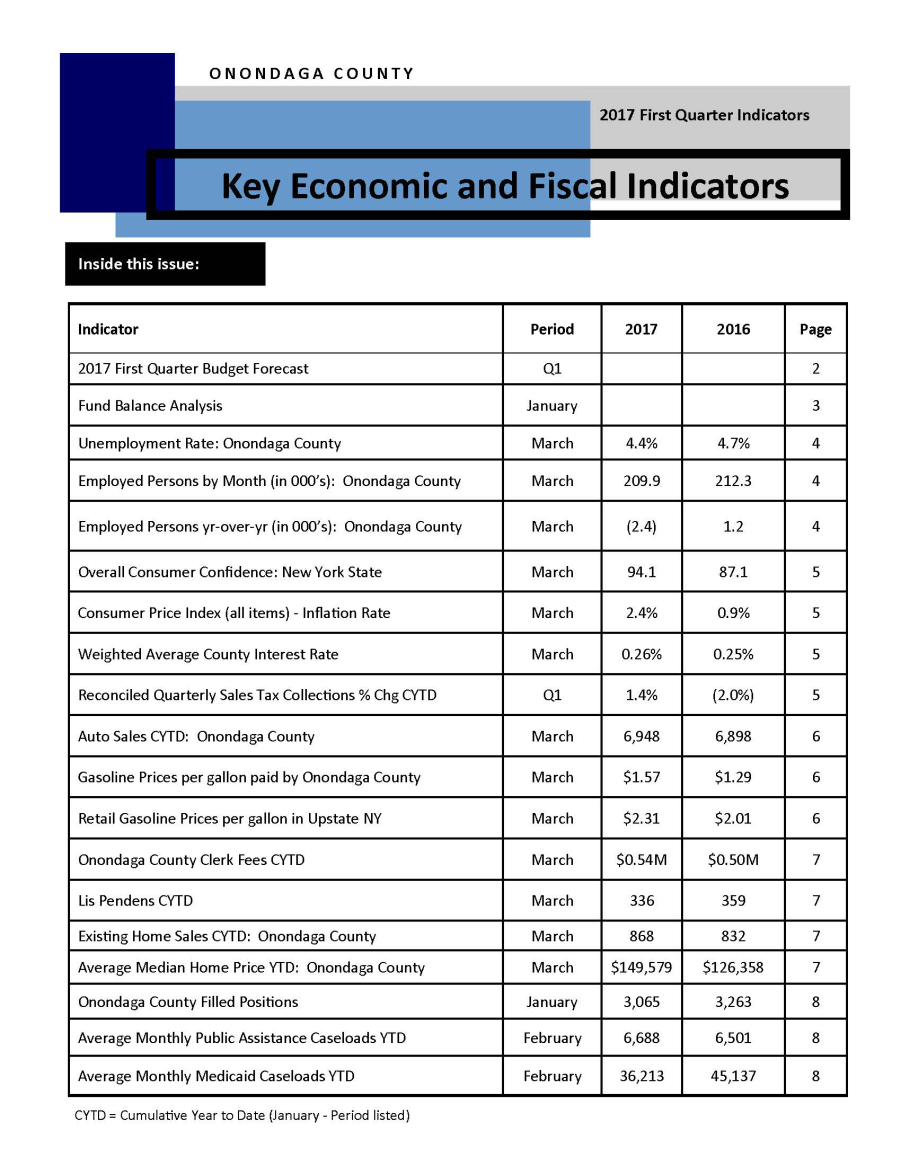
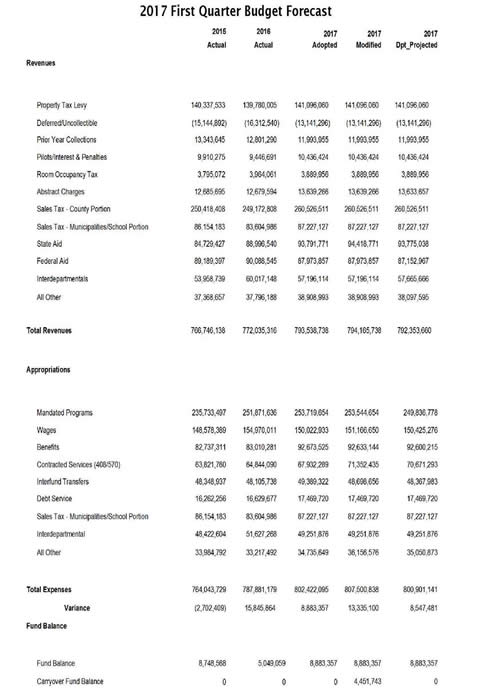
Revenues:
- At this point projecting most major revenues to be on target
- Right no sales tax statewide for first quarter cash basis is up 3%; last payment has county up 3.6% year over year
- Need close to 4% to meet budget this year
- Right now forecasting sales tax at what was budgeted
Mr. May asked for clarification – to meet budget this year, it is really to get back to where we want to be. Mr. Morgan agreed; in 2014, 2015, 2016 sales tax was in essence flat – looking at 4% to get to what was budgeted in 2016.
- State & Federal aid – product of mandates – down a little bit because mandated costs are projected to be lower than expected
- Total revenues down a little under $2 million
Appropriations:
-
Savings in mandates: $1.6 million in Family Assistance, almost $1 million in Day Care $500k in JD PINS, $500k in Special Children’s’ Services - expecting those accounts to come in under budget
-
Wages: 200 people took retirement incentive – departments are dealing with a lot less resources to meet goals/missions; holding the line on spending in this account
- Salary analysis for every position in the county requesting to be filled – only acted upon when it is known that a department can meet and stay within their budget
- Are evaluating all positions to ensure that they are critical and need to be filled
-
Benefits: huge jump from 2016 to 2017 – a big piece they struggle with in the budget; RFP currently on the street
Mr. Trombley said that it came back on Friday.
- Will start that review process; Legislator May asked if he could be part of the team to evaluate it and would love to have him
- Interfund Transfers: down $1 million; Van Duyn – going to run out of fund balance – this is the last year;
- That number was reduced by $3.5 million will go from general fund to road fund, but since using OTASC money, will not send the money over, but have to pick up $2 million stranded costs from Van Duyn because there isn’t fund balance to cover that any more
- There was a universal settlement and able to reverse a long-term liability that was out there
- Able to cover 2016, but down to $1.7 million and stranded costs are in the $4 million range
- Have to start eating at general funds to cover stranded costs at Van Duyn
- Will continue - retiree health until people depart and workers comp claims – will be out there for years down the road
- Done a good job on settling workers comp claims from Van Duyn arena
Mr. Kilmartin asked if that includes litigation against the county and Van Duyn. Mr. Morgan said it would be charged to that fund. Mr. Kilmartin asked if they have petered out over the passage of time and been reduced. Mrs. Berger said she would look into it and follow up.
Mr. May said that going forward, you don’t want much cash sitting in that fund either. Running out means that we will need to budget for it going forward. Mr. Morgan agreed; has talked to Mr. Fisher and Mr. Maturo about pulling Van Duyn into the general fund – doesn’t make any sense to have it in a special revenue fund anymore because there isn’t going to be any money left. Contemplating making Van Duyn a department within the general fund in the 2018 budget.
Mr. Morgan continued.
- Holding the line on the expense side - down $7 million
- In terms of the $3.5 million, it is being eaten up by Van Duyn expenses
- Theoretically would want to see the $8.8 million less $3.5 million
- Projecting surplus of $335,000 for entire year
 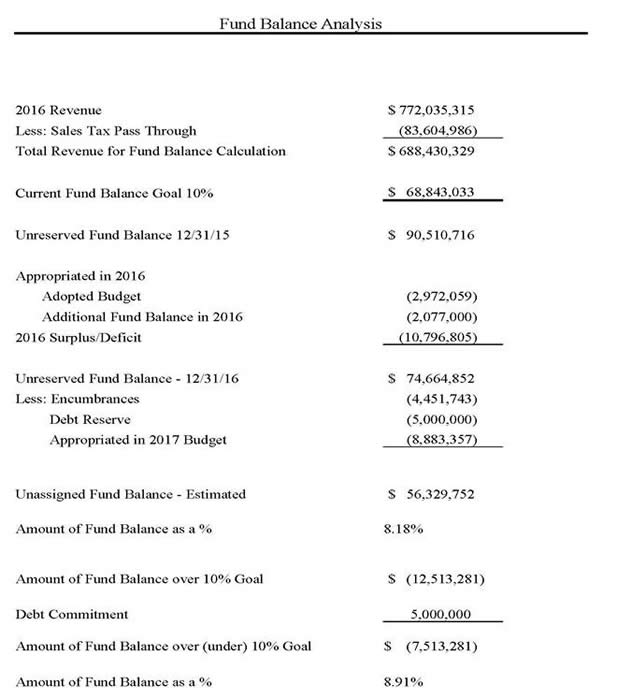
Fund Balance Analysis:
- 2016 Revenue $772,035,315; CAFR is not done yet, doesn’t think this number will change.
Mr. Maturo said that it shouldn’t.
- Sales tax pass through $83,604,986
- Net $688.8 million
- Ended 2016 with expenses exceeding revenues by $15.8 million
- Anticipated using $5 million in fund balance, ended up using another $10.8 million
- $56,329,752 unassigned fund balance – 8.18% of general fund revenues; $12,513,281 under 10% goal
- $5 million debt commitment is available to be used – legislature could appropriate that money – would bring fund balance to 8.91%
- If took formal action on the $3.5 million, it would bring it to 9.42%
Mr. Morgan referred to the fund balance policy, noting that the legislature has passed 5 resolutions over the years. The original in 1999, didn’t set a policy at 10% - it said anything over it should be used for debt management and debt reduction. Another in 1999 established a policy that the legislature “attain and sustain” a general fund accumulated fund balance of approximately 10% of general fund revenues. At that point in time we had not attained it. He said that he does not see that much different than now – going to attain it again and then sustain it. There are a few other resolutions that change the formula.
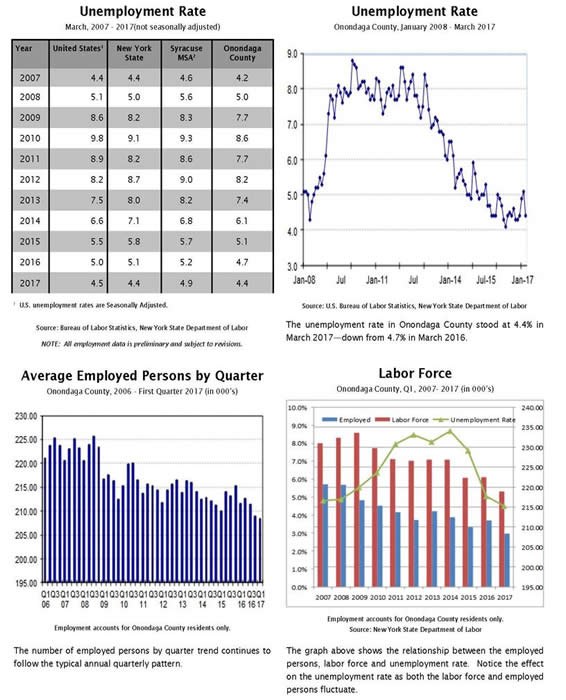
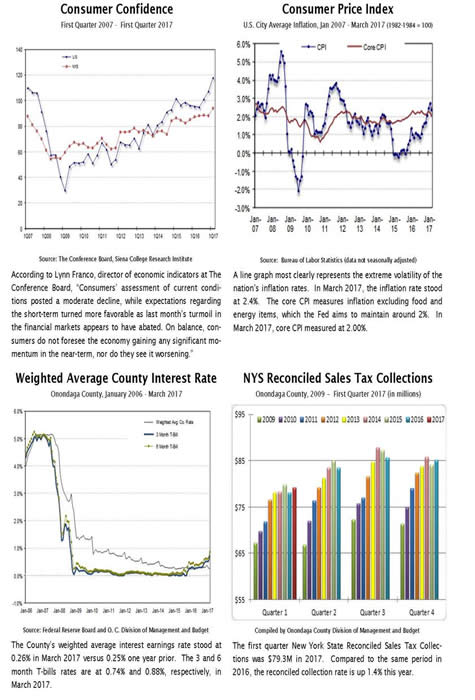



Mr. Kilmartin referred the gas prices and the impact on sales tax and asked if there is any data on the recent trend of where the price has gone. Mr. Morgan said that it is creeping up a little bit, which has certainly helped statewide. It is hard because it is not known what people are doing with that disposable income – putting it in the gas tank or spending it on something else. NYSAC put some numbers together – if assumed that they took the money and paid off debt or put it in the bank – they are huge numbers. There is definitely an impact from lower gas prices.
Mr. Jordan referred to unemployment rate going down by 3%, but the number of employed persons is down also, and questioned if it is that more people have stopped looking for jobs. Mr. Morgan said that it is.
Chairman Knapp said that legislators have gotten a lot of literature and requests regarding raising the tobacco age to 21. In a meeting, Legislator Jordan said that it may or may not have an impact, but raising the tax certainly does. Chairman Knapp asked if there is the ability to do that locally. Mr. Morgan did not think so, but will look into it.
Chairman McMahon referred to the actual for mandated programs. Mr. Morgan referenced a little relief potentially in 2017, but we were slaughtered by the state from 2015 – 2016. Mr. Morgan explained that in 2015 the state forgave 4-5 years of state placement costs. The county sends kids to state facilities and gets charged back a local share for it. There was $11 million sitting out there that rolled year after year because they weren’t billing us – they were way behind. The 2015-2016 budget forgave all of those back bills, and were able to reverse almost that entire accrual. It was an anomaly; if you go back to 2013 the mandates were $247 million, in 2015 they were $255 million.
Chairman McMahon asked what the hope is in looking at health insurance related to financial impact. Mr. Morgan said that the claims this year have been a little lower than last year. He has heard that there is going to be some aggressive proposals, some potential guarantees, but he has not seen the proposal. Mr. Trombley said that they were due at 4:00 on Friday; he has not opened them yet.
Mr. May said that with the respect to the claims cost, those are what they are. It’s the retention costs, the costs to serve the county, that is really in play with this proposal. Mr. Morgan said that the word on the street is that there is actual guarantees on claim costs – real aggressive proposals may be coming in.
Mr. Fisher said there a lot of things they are trying to do. Prescription benefit management – we have higher co-pays for expensive drugs. As generics come along, the prescription benefit management, ProAct, can manage the formulary and still allow folks to have their current co-pay as long as they substitute generics. Very optimistic about it this year – perhaps capturing on an annual basis over $1 million in savings for making that change. The legislature has approved union contracts recently, moving employees’ contributions up to 14%; up to 16% next January, then up to 18% for CSEA and 20% for the rest. Retirees are still at 15% -- there could be a point where the legislature wants to take a look at retirees – moving them up towards the 20% level. Also finding which benefit manager has the best contracts with doctors and hospitals. As hospitals are employing more of their own commissions, there seems to be little bit of an appetite for taking on some risks. It could translate through to some savings, not just in the administrative fees that we pay, but in what it costs to settle – insurance companies would have to be at risk for some of the settlements and not having the county solely at risk. Looking at stop loss – have had a larger number of major claims in the last year. Looking at Medicare Advantage – one year left with current carrier, United Health Care, but looking to extend beyond 2018 for a premium in 2019 or 2020 that could be fixed or guaranteed to exceed some level of growth.
Chairman McMahon said that the 2017 budget is now about managing the numbers to obtain the goals. He has real concerns about 2018 with some policies from Albany – thinks we need to be aggressively engaged with other counties and NYSAC. We have been speaking about indigent defense, and Kathy Dougherty has been working on that, but there is the Raise the Age issue and understanding what that means. There is a capital ask for Hillbrook and assumes that when that policy is implemented, and inmates under 18 will go to Hillbrook, it could potentially mean more capital at Hillbrook and more costs. That is a policy from NYS; it is our responsibility that we don’t sugarcoat any of the issues of how it will impact us locally. “If it is going to cost us more money, we need to be screaming from the heavens, no matter what our relationships with Albany are, to get money back.” He said that we need to know how this impacts us fiscally, operationally, and with personnel – need to document every dime. He said he has also heard various stories on foster care. NYSAC has told him that what happened in this budget will be close to $2 million more. Mr. Morgan said “no”; it was a straight up cut to the block grant. They allocated it based on the number of youth in foster care. He said that we have received our allocation and it’s actually more than last year. Chairman McMahon said that these are things across the state that are negatively impacting counties. We need to be watching those, and if that trend comes, we need to scream.
Chairman Knapp said that foster care was up $17.2 million last year and asked if that trend is flattening out. Mr. Morgan said that it is. Ms. Rooney said that they are working at it every day to make sure those numbers are being managed. The real expenses are the children in congregate care – the highest level of care – have set an internal goal to reduce that by 50% by the end of 2018. All kinds of measurements have been put in place to try to obtain that. In answer to Mr. May, Ms. Rooney said that congregate care is the highest level of care; it’s institutional care. Going into this year there were 101 and are now down to 84. It’s not always in the institution’s best interest to have children leave, because that is what pays there bills. There is a meeting on June 9th with all institutions where children of Onondaga County might be housed, to talk about how things are going to be done different contractually – making sure we are doing all we can to have discharge plans for children to go to lower levels of care. It is much less expensive to have a foster home or a therapeutic foster home rather than an extremely expensive, high level care. Mr. May said there are children in congregate care too long; Ms. Rooney agreed. Mr. May asked if there are more than there typically have been under that umbrella. Ms. Rooney said that there are, but the number is coming down – as part of the effort and in looking at all of the children in foster care; looking at it across the board. When you look at the dollars, the huge numbers are in the 100 kids in the highest level of care. Mr. May said that he looks at the problem and can’t help but view it as a symptom of big issues. Ms. Rooney said that primarily the increases are related to the opioid problem that affects families and children. Mr. May said also the physical health of the children born under those circumstances. Ms. Rooney agreed and added that it is also because of family breakdowns because of drug issues.
Mr. Morgan said that the 2018 budget process starts this week; have already started working on plans to review every last nickel in the budget. Chairman McMahon said that the caucus looked at every tax levy of every county, and i.e. Montgomery County has 3 times the tax levy, and their budget certainly isn’t 3 times as large – not even close. Onondaga County has done good job in keeping property taxes low compared to other counties in NYS. It’s probably not a good measure for success, because our property taxes are still too high, but it has been our choice with some of the fiscal pressures and we decided to give more back. Mr. Morgan said that it has really been a revenue issue – sales tax – 3 years in a row. Chairman McMahon said that Albany is coming up with more and more aggressive programming and potential mandates on counties, and gave the example of the Excelsior program. He is concerned that a year from now – not hitting a number because the mandate on this or that program came in higher and we weren’t watching it close enough. We have to watch expenses now because our revenue has been sporadic. Mr. Morgan said that we have – balanced last year’s budget by offering an incentive and 200 people left – it was $8.2 million in salary cuts. After a while, to keep doing that, will weaken everything we do, and that is why we have to focus on things that are discretionary and not doing them anymore or doing less of them. To continue to chip away across the board, Ms. Rooney’s departments aren’t going to be able to provide the services they need to, roads aren’t going to get done – “we just can’t keep doing the cookie cutter approach.”
Chairman McMahon said that when you look at our neighbors that do well compared to communities in New York State, there are a lot of clear indicators. At some point, if these mandates keep coming, who is to say that the county doesn’t take more of an aggressive stand – we can’t afford them anymore. He said that he doesn’t think we are there; have plenty of options, but we have to watch that. He told Mr. Morgan that is what you do – you know how it impacts your budgets. It is our job to advocate loudly when things are going wrong, and the legislature needs to know information sooner if it’s going to have an impact on the budget.
Chairman McMahon asked for numbers from the County Clerk’s office regarding how the revenues are performing by fees. Mr. Morgan said that he can provide it. Chairman Knapp said that there are fees from the new online services also.
Mr. Jordan said that there were around 200 people that took advantage of early retirements, and it was known that some of the people would have to be replaced in positions. Mr. Morgan agreed, and said that the clean-up resolution on on November 7th contemplated that, $700,000 was moved around – departments sacrificed some other things to get positions back. There was a plan to bring positions back in certain areas – departments took other cuts to meet the goal that we set for them. Mr. Jordan asked how many positions have to be refilled. Mr. Morgan said that they are down to 163. Mrs. Venditti said that is from 11/7/2016 to now that are filled; Mr. Morgan said filled to filled is 163 and most departments will meet their salary accounts. Mr. Jordan said that he assumes that includes people that may have decided to retire in the meantime. Mr. Morgan said that if someone leaves and we re-hire it, it is still 163. In answer to Mr. Jordan, Mr. Morgan said it is a fluid number and they are managing it. Mr. Jordan said he would like to know how many people fall into the category of people that have since left but we will have to refill. Mr. Morgan said it might be easier to provide the information on the positions, where people retired, and how many were refilled. Mr. Kilmartin said that otherwise there is a consistent cyclical nature – someone passes away, moves to a different state, retires, etc. Mr. Morgan said he will provide the information where someone retired and that position was actually filled. Mr. May said that with the budget clean up, you are managing to be down to 163 positions. That is the plan for the year and to change it would really take legislative action. Mr. Morgan said that $8.2 million was cut out of salaries – departments have to deal with what was allocated by the legislature and live within those budgets.
Mr. Jordan said from 2016-2017 a decrease of deferred and uncollectable is shown, a little under $3 million. The prior year collections are showing as down and asked if they are previously deferred. Mr. Morgan said that it could be. He said there was a huge deferred and uncollected at the end of the year – it appears that people are paying their prior year taxes and not their current year.
Chairman McMahon referred to ROT, actual was $3.964 million, and asked what the budgeted number was. Mr. Morgan said that is just the number that goes here (in report) – the total is in the $6 million range. Chairman McMahon asked for the budgeted amount – wants to see how it is trending.
Mr. Fisher referred to the 2018 budget process--departments are instructed to look at the folks that came back on the 103 payroll that retired and not have any of them in the 2018 budget. Also are asked to look at any of the ERI peopled that may be straggling and make sure they are not in next year’s budget. They will have to decide if they can fully request the work programs that they have had in the past. Some will have to cut back and not be able to do that same work program. After the budget was adopted last year, they were asked to provide revised work programs. Some will have to do less with less; have received good cooperation by and large with one exception from an elected department – the legislature may have to get directly involved.
Chairman McMahon said he has asked the executive branch to do everything they can with the 101, and has had the same conversation with other electeds. He has spoken to the Sheriff, who has probably the largest ability to help impact the 101. Everything done today with 101’s – i.e. 30, 60, 90 day lags, gives an opportunity to build back up the balance sheet so we are not making very tough decisions. The executive may have priorities in her budget, but we may not agree on how those priorities shake out at the end of the day. His advice to every department regarding the 101’s is to take your time.
Mr. Jordan said that Medicaid caseloads are down but overall our public assistance caseloads are up. Mr. Morgan said that Medicaid caseloads are down because the state is actually taking control of those. In answer to Mr. Morgan, Ms. Rooney confirmed that they have stopped. Mr. Morgan said that they have slowly taken over certain types of cases; they and we determine the eligibility for them. In answer to Mr. Jordan, Mr. Morgan confirmed that the county doesn’t administer those cases at all. Mr. Morgan said that staff has been reduced proportionately in that area – either when retire, through attrition or redeploy them in other needed areas. He does not think it will go down much more. The state’s original plan was to take over all cases except long term care cases, but it doesn’t look like they have the ability to take this program over like they once thought they could.
6. PURCHASE: Andrew Trombley, Director
a. Revenue Contract Report
Planning Dept/Ag Council – ON-Farm Fest/Buy Local Buy Onondaga Grown:
- RFP sent to 6 vendors; received 1 response back
- Ag Council reviewed it – price was more than they wanted to spend
- Worked with vendor; did shared risks
- 4/7/17 - began contract process with iHeartMedia
Chairman Knapp said that the price was reduced; they will try to fill the difference with outside sponsors. Once they meet a certain number with outside sponsors, anything over that is shared between iHeartMedia and the county. Mr. Trombley said that there is potential for sponsorship revenue.
Parks Dept – Lights on the Lake:
- 1/6/17 RFP sent to 13 vendors; received 2 proposals
- 3/23/17 Galaxy Events awarded – current vendor
Mr. May asked how they did this past winter. Mr. Trombley provided the following:
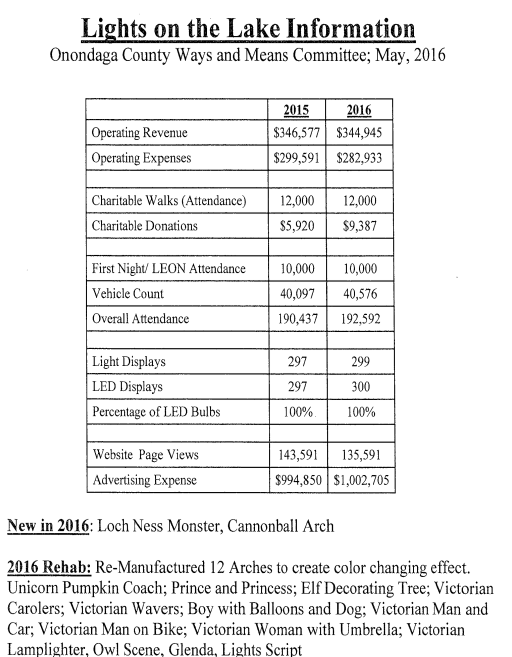
- 7 or the last 8 years have had the highest car count
- 2 charitable walks this year – Human Society, Hillside Work Scholarship
- Last one was the 2nd highest attended in history
- Have good projects moving forward
Chairman Knapp asked what the bottom line for revenue to the county is. Mr. Trombley said it typically comes in at about $430k. Regarding the two proposals, one said they would do a split at $400k and the other at $430k, but the $430k was at a higher rate. Will always make more money with the vendor that was chosen. They are also picking up some ancillary costs that the county was absorbing. The committee was very confident in staying with current vendor. The most important thing is to minimize risk – don’t want any expenditures coming back.
Mr. May agreed and said that we don’t want to be in the concert business, Lights on the Lake business, and things like that. In answer to Mr. May, Mr. Trombley confirmed that ancillary costs are things like park attendants, security, etc. Mr. May asked if the revenue is covering our costs. Mr. Trombley said that we are, and added that each year they reinvest whatever they make in profit back into the show. For the past several years it has been about $45,000 - $50,000. It is put back in and there are new or rehabbed displays, moved from traditional lights to LED’s, etc. They are never coming back to the legislature looking for appropriations to fund the program – it is self-sustaining. Mr. Kilmartin asked for clarification – is it the monies that the county receives being poured back into Parks to rehab the arches or lighting structures. Mr. Trombley said that he is not sure who does the actual work, but it’s his understanding that the extra money is being put back in.
Mr. May asked if Galaxy contracts with a light company or does the county do it. Mr. Maturo said that the county owns the lights and believes that they maintain them also. Chairman Knapp asked who replaces a bulb if it goes out; Mr. Trombley will look into who does the maintenance and repair.
Mr. Jordan referred to $1 million in advertising, but net operating revenues is showing at approximately $60,000. Mr. Trombley said that based on the proposals, Galaxy takes in money and they do the advertising – that it what they commit to for the program. The revenue shown is what comes into the county to offset expenses.
The meeting was adjourned at 10:35 a.m.
Respectfully submitted,

DEBORAH L. MATURO, Clerk
Onondaga County Legislature
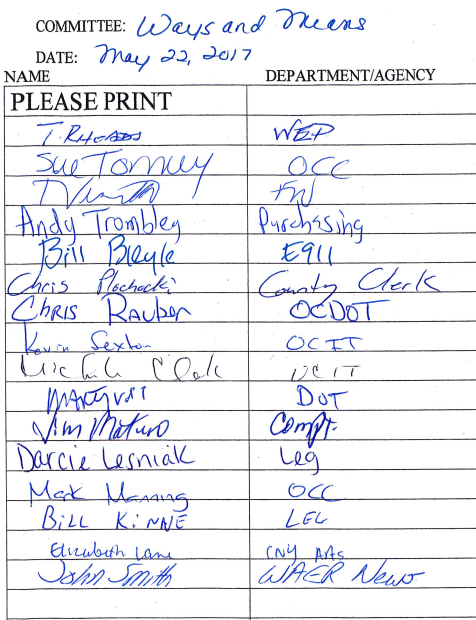
|











































